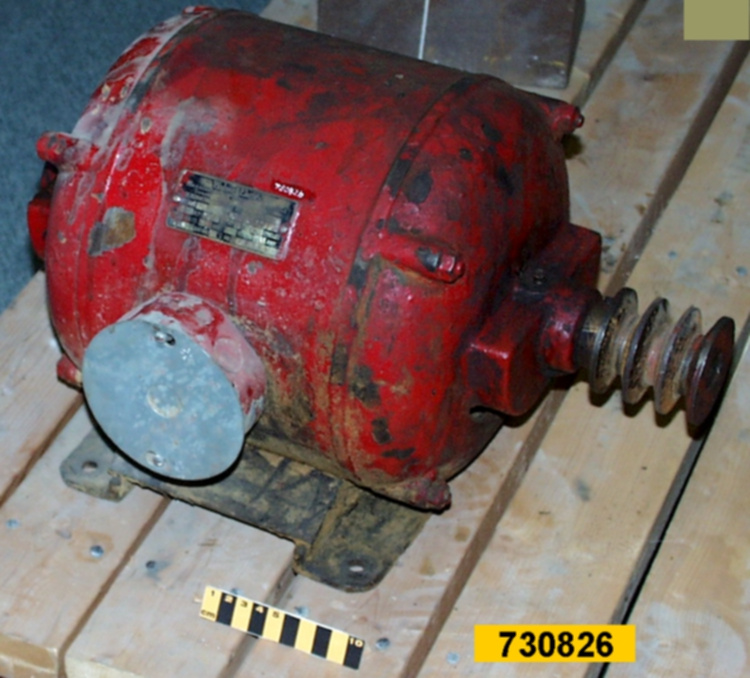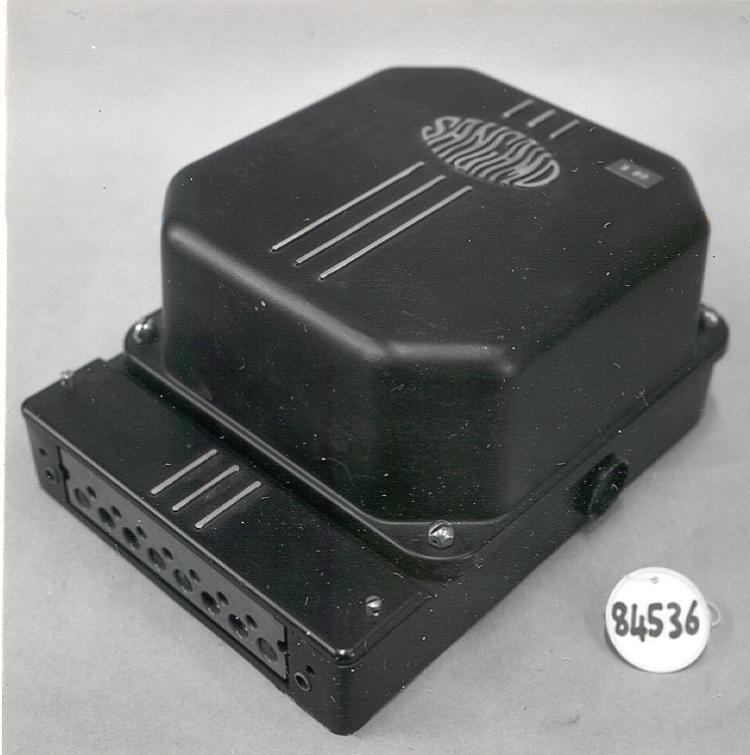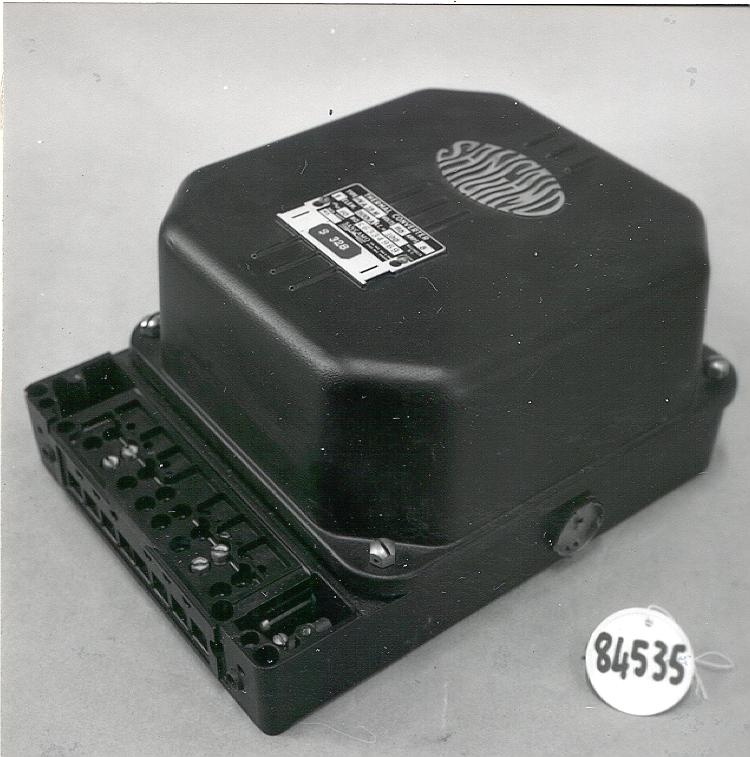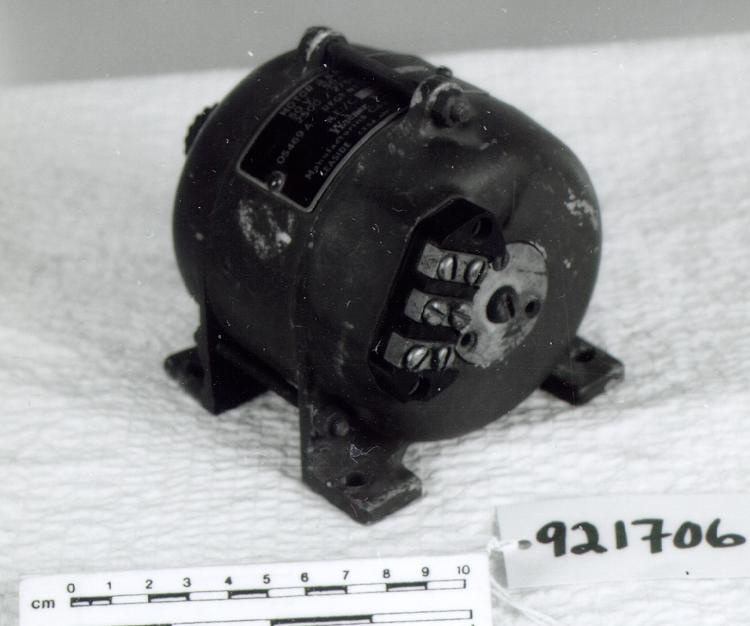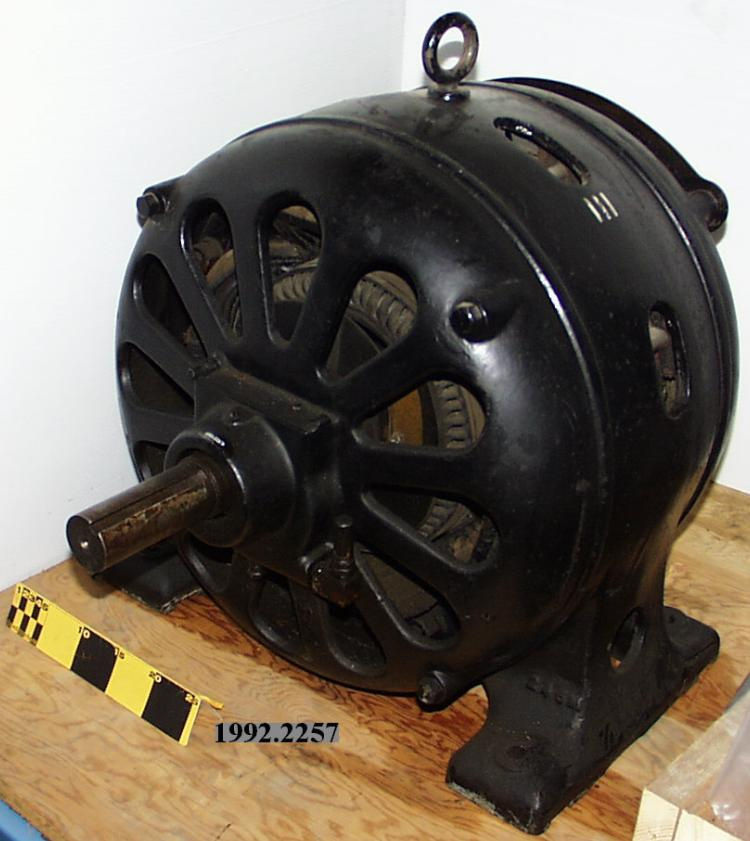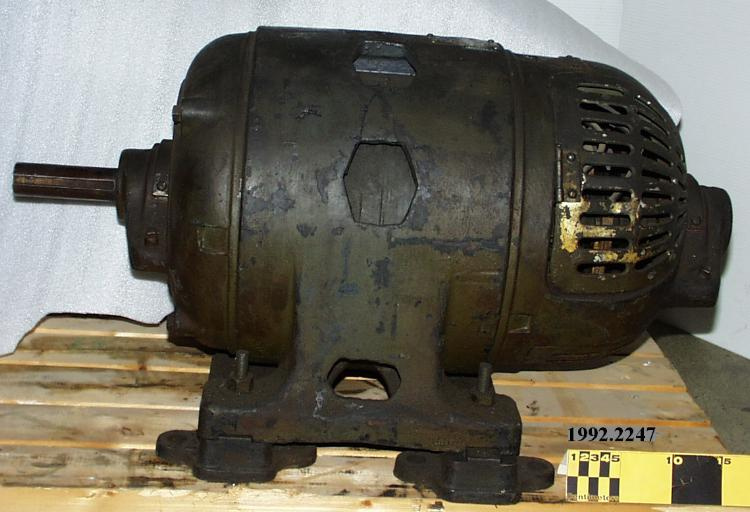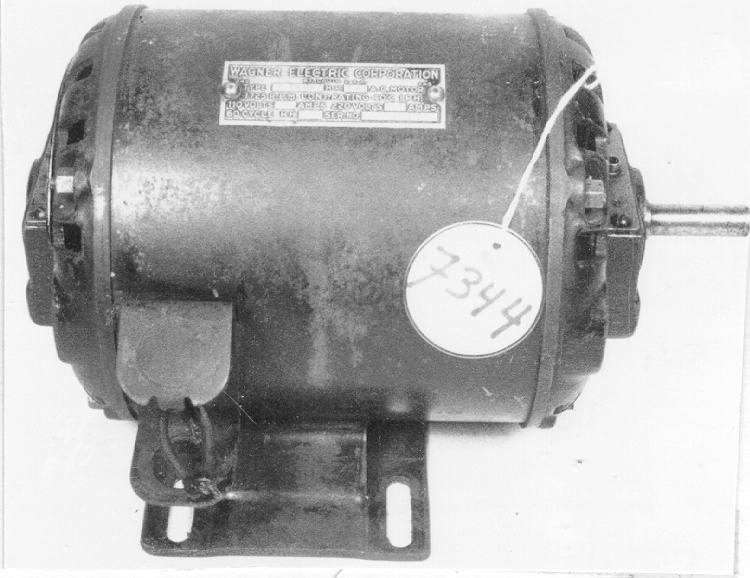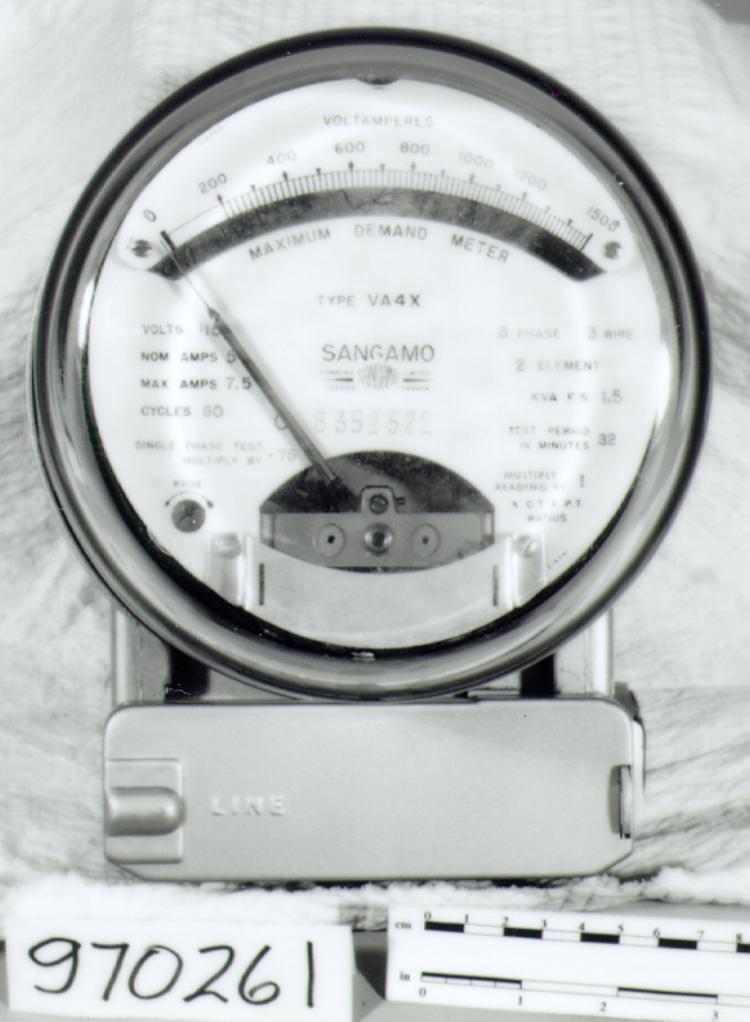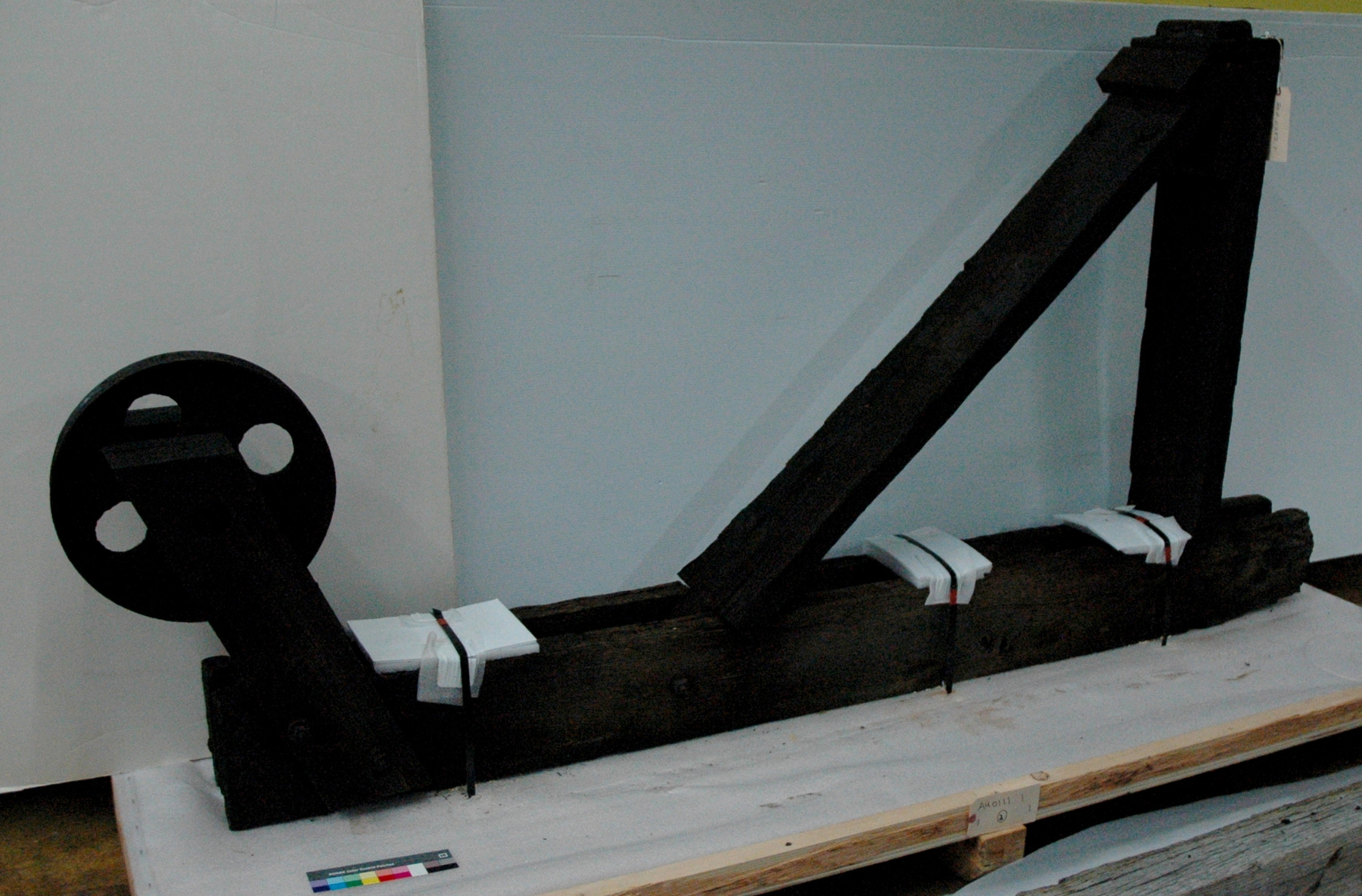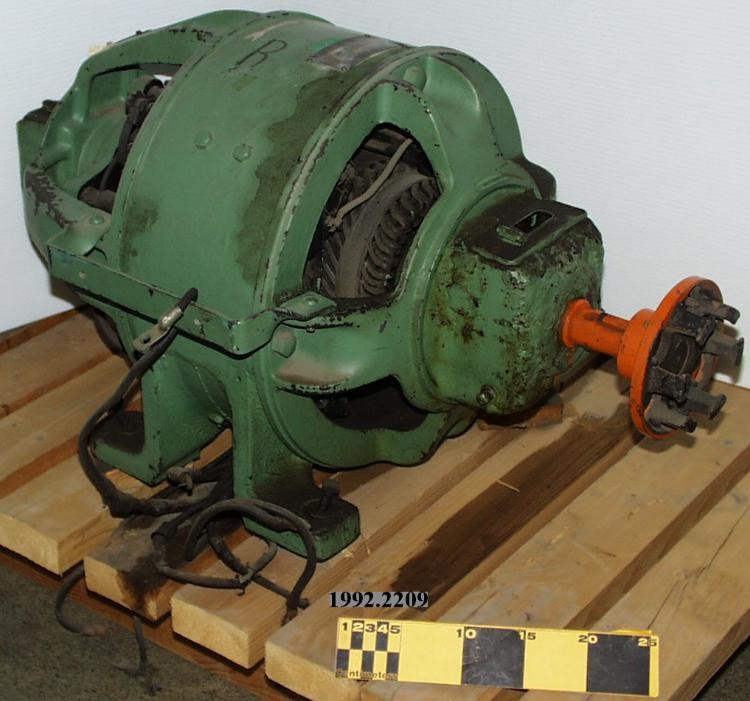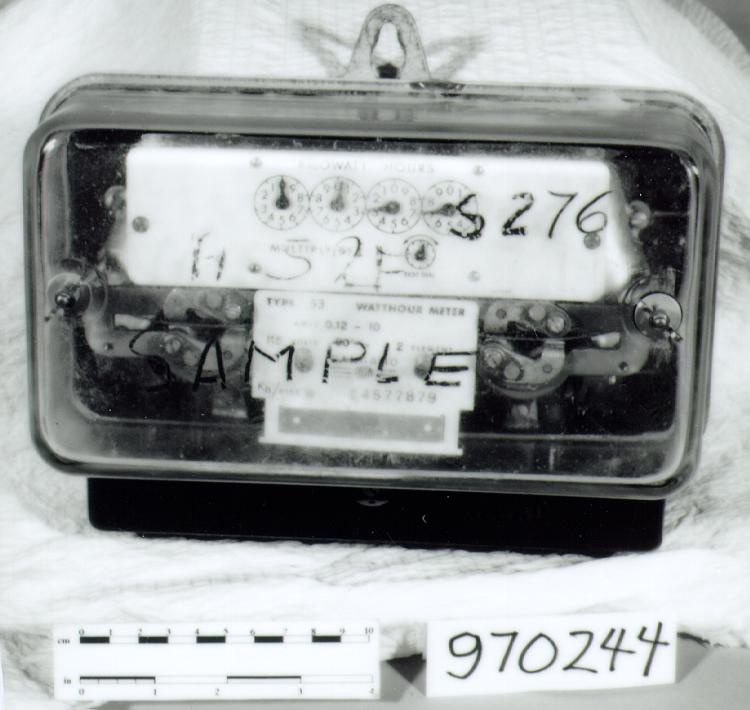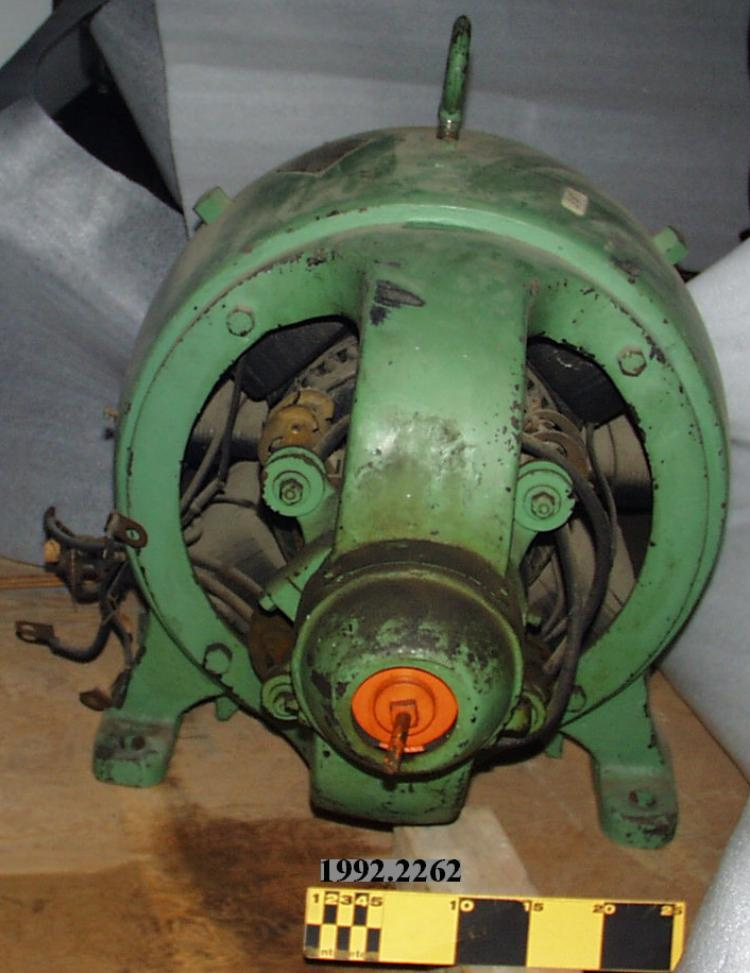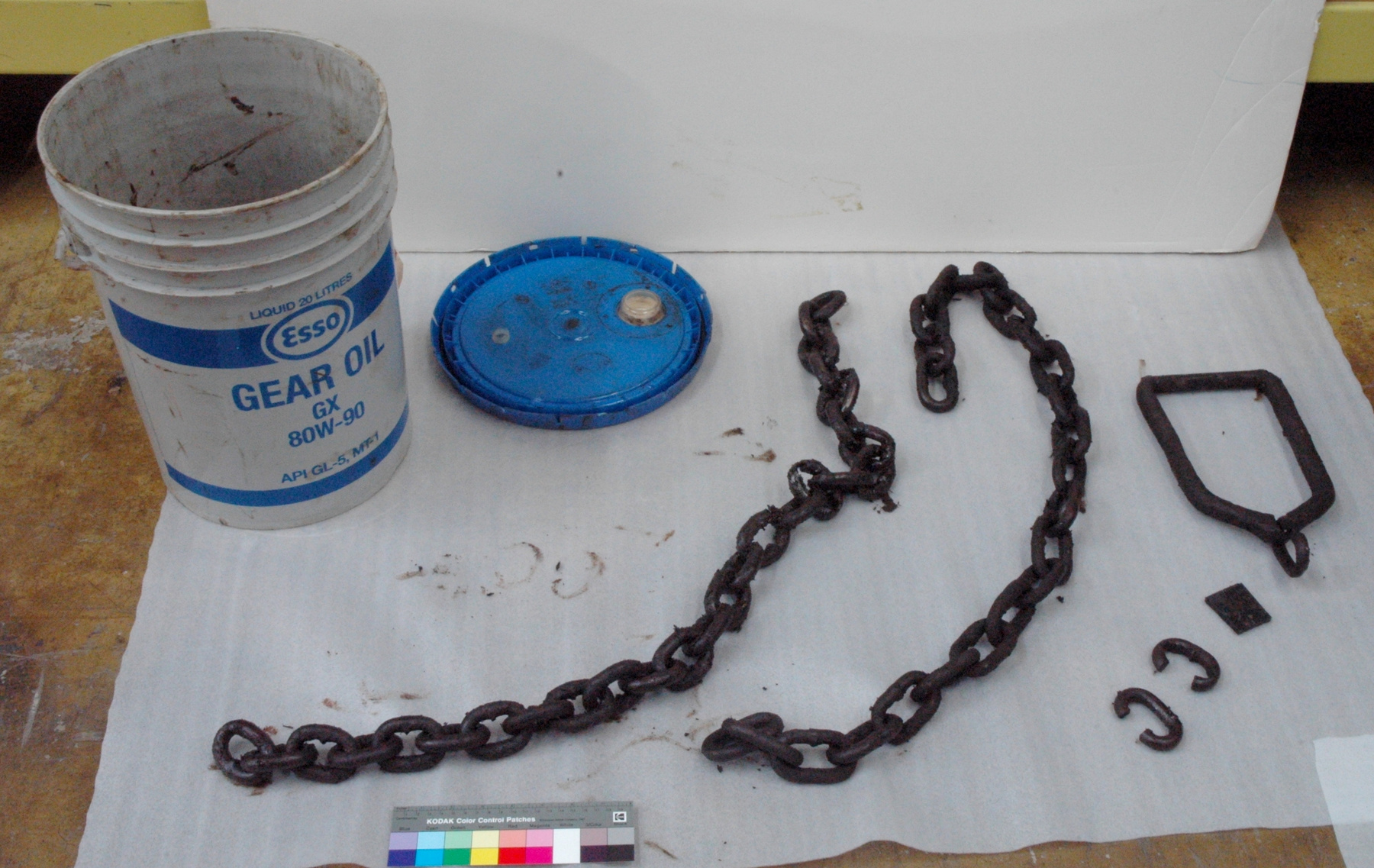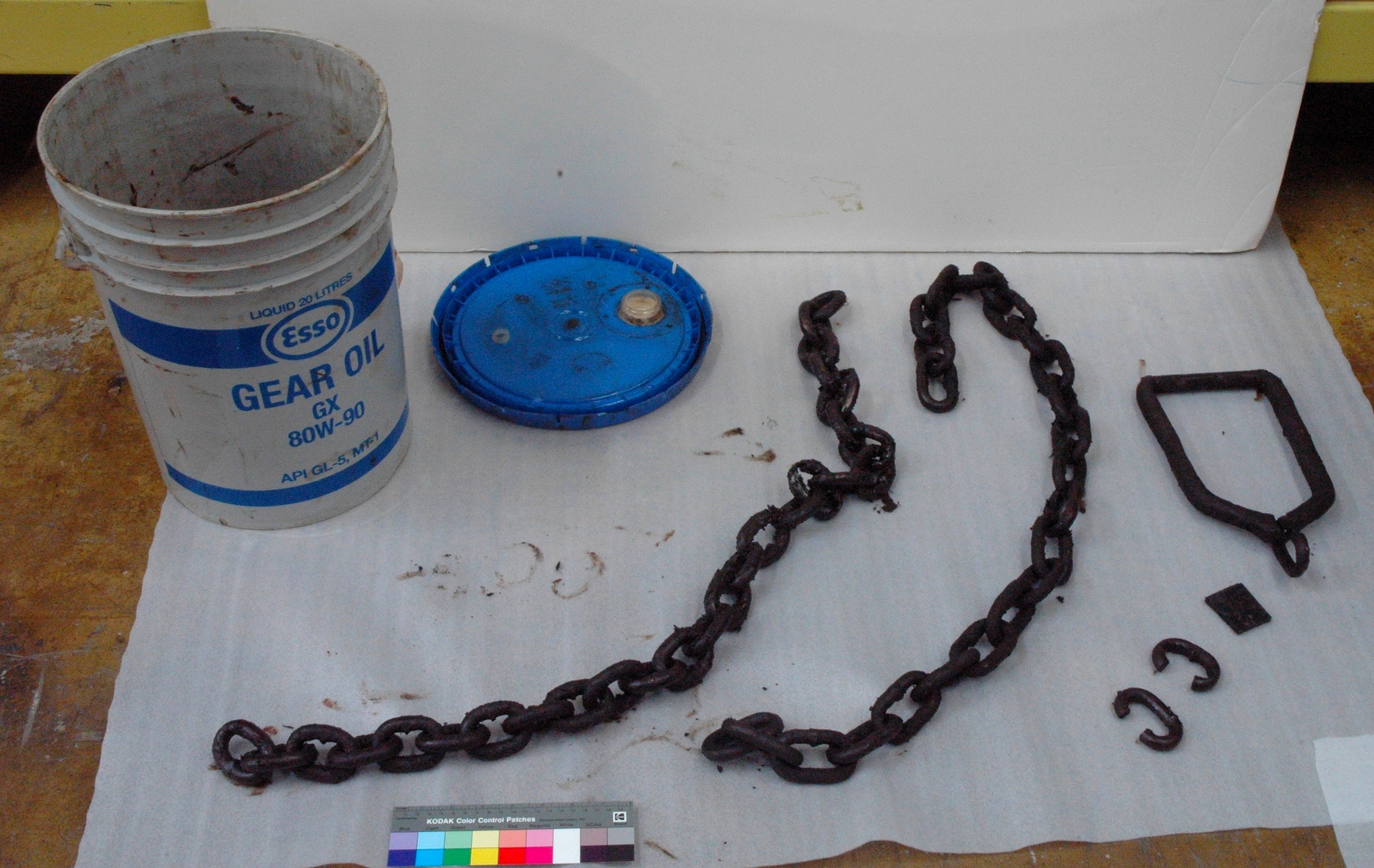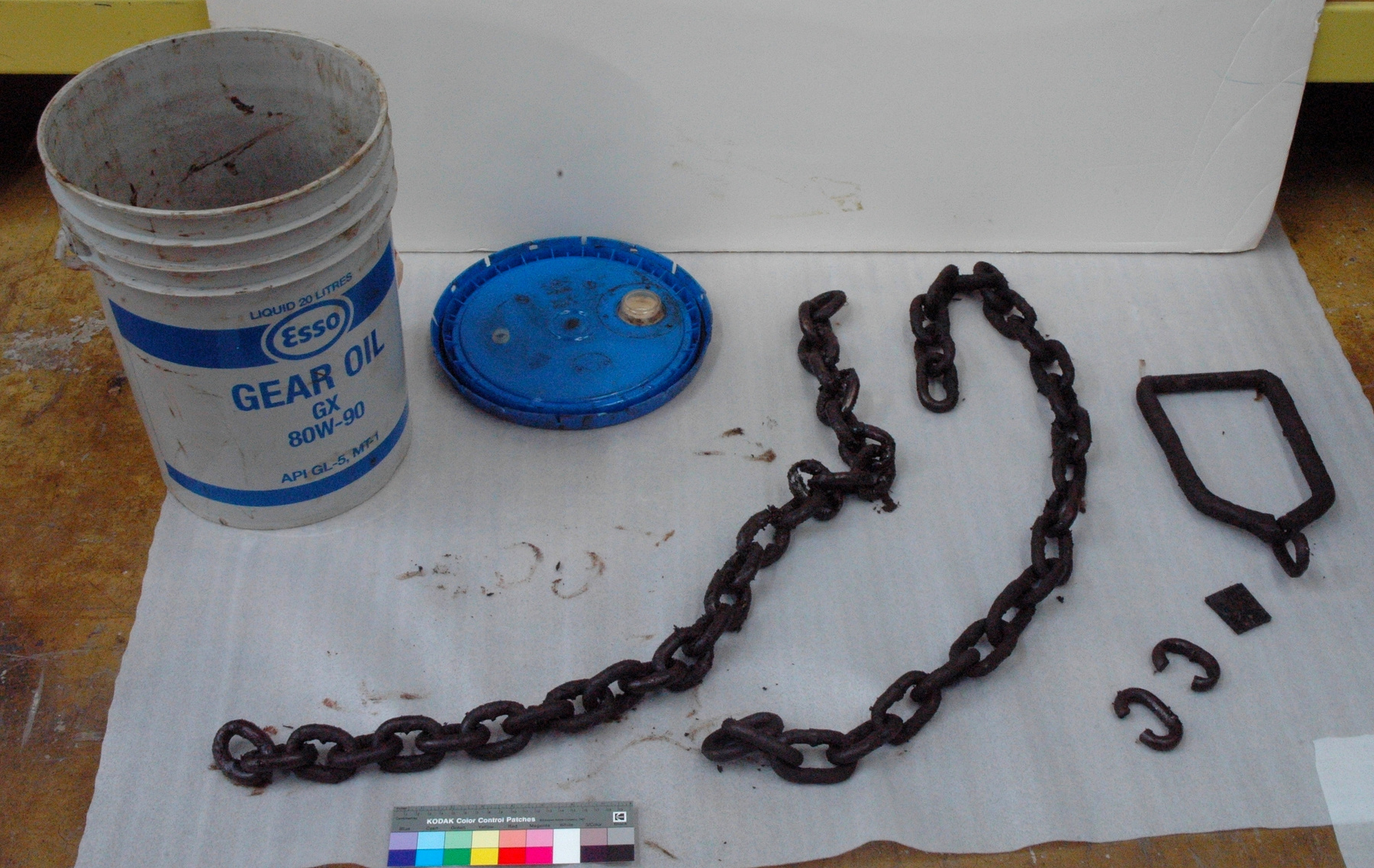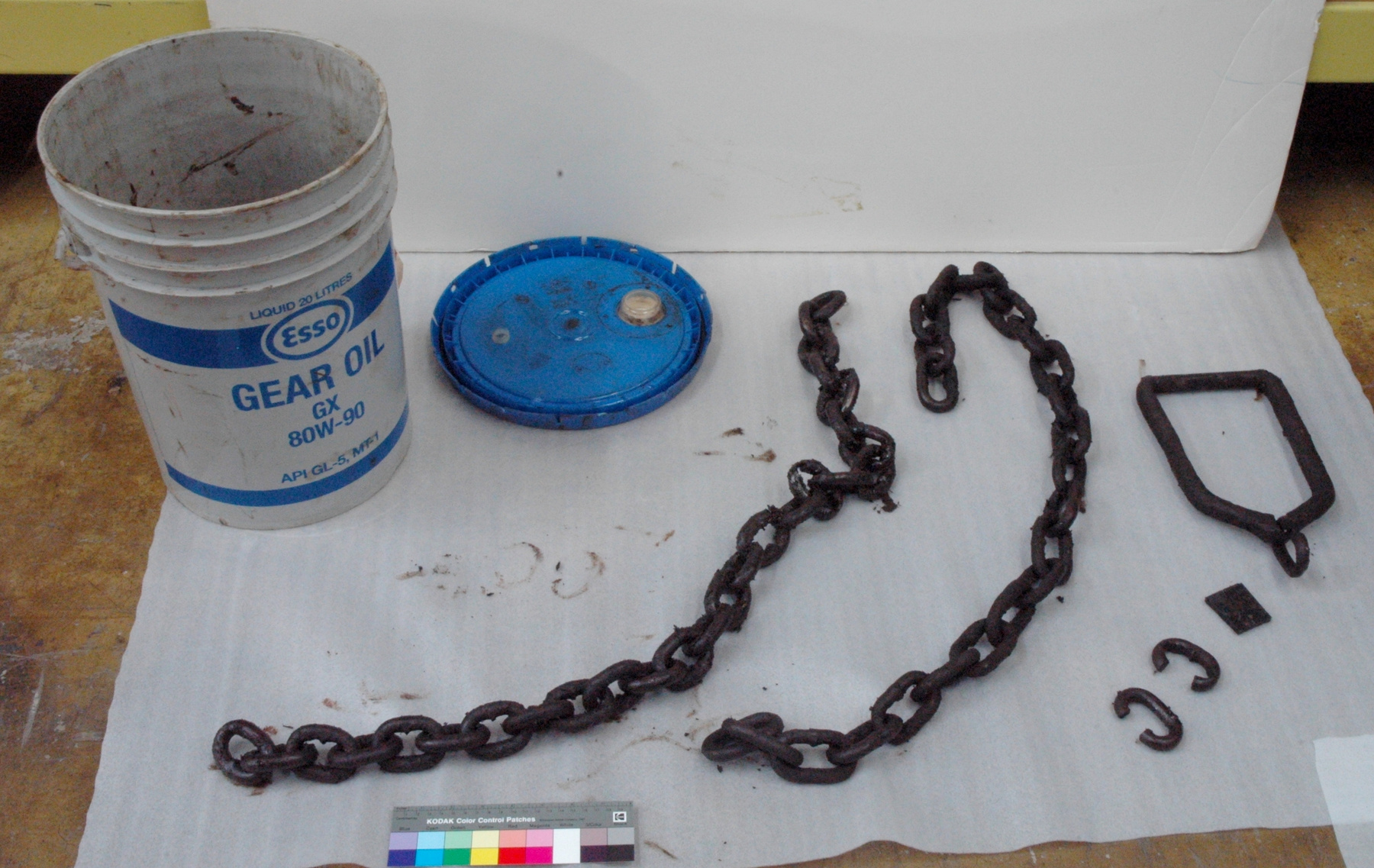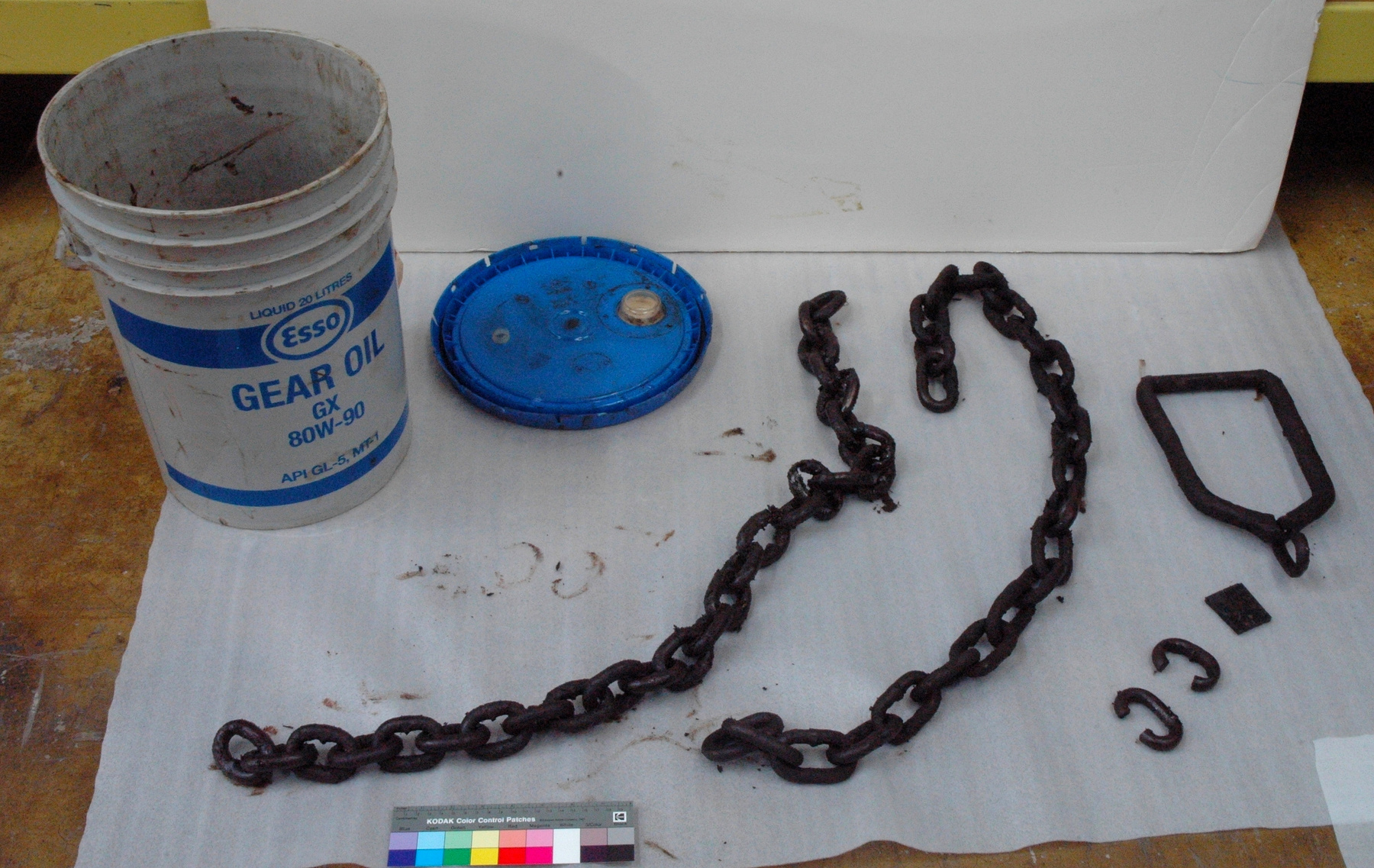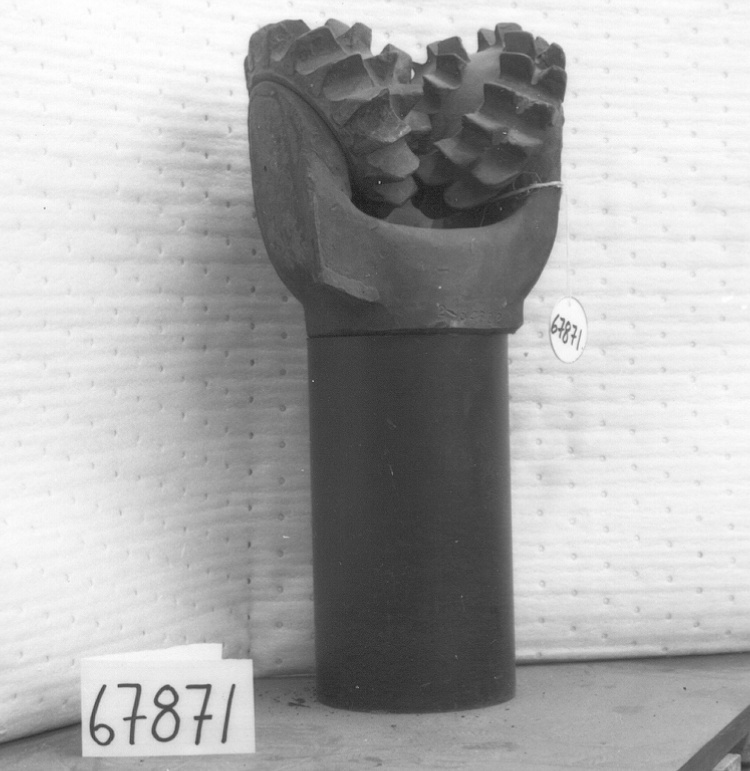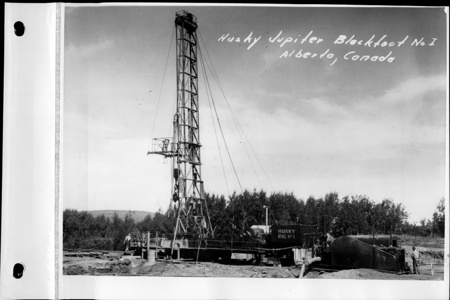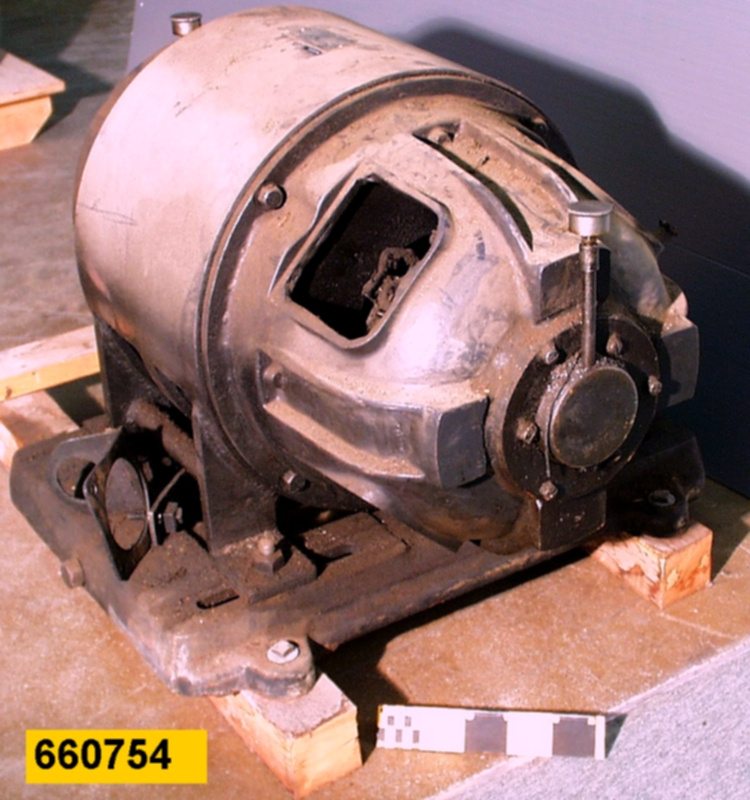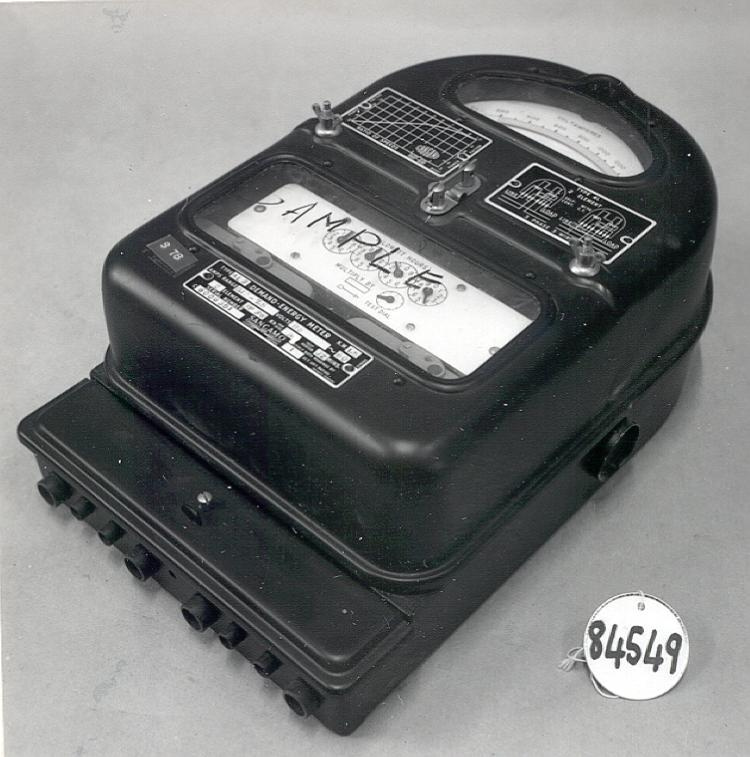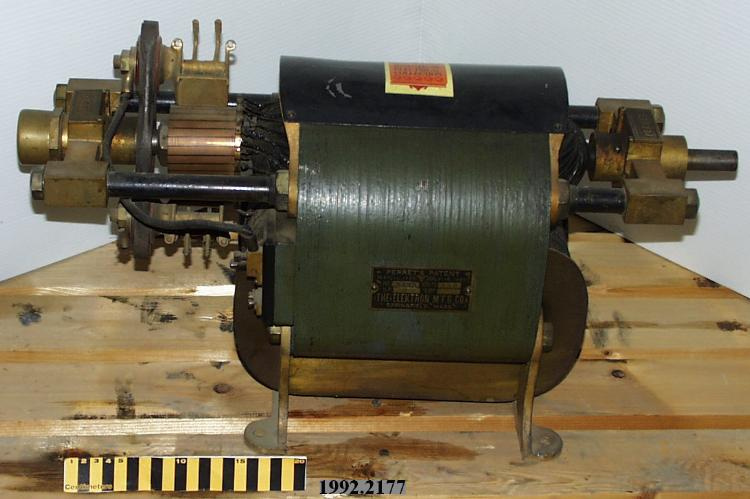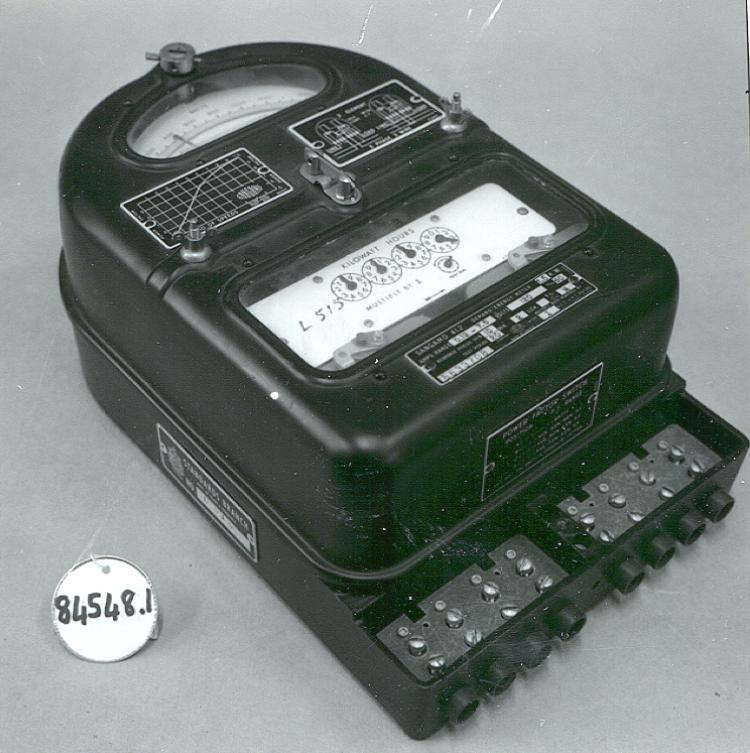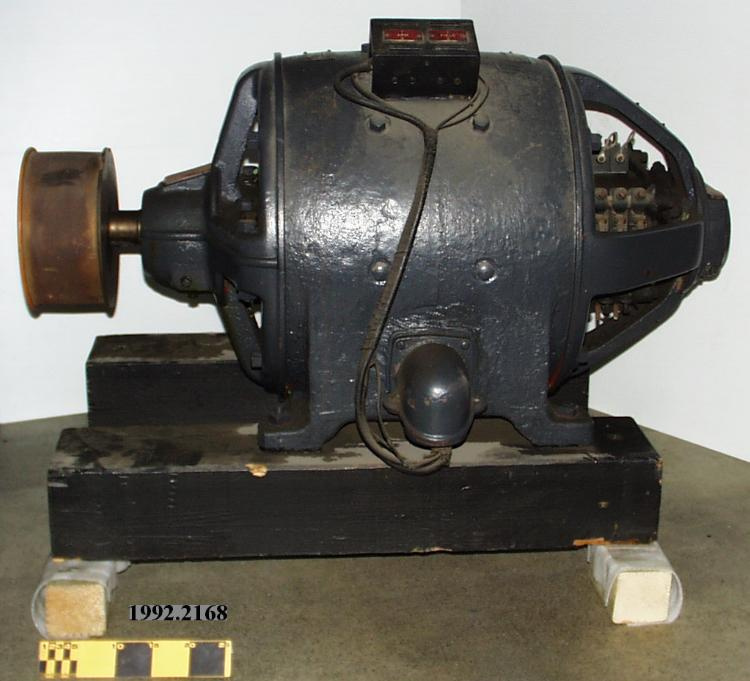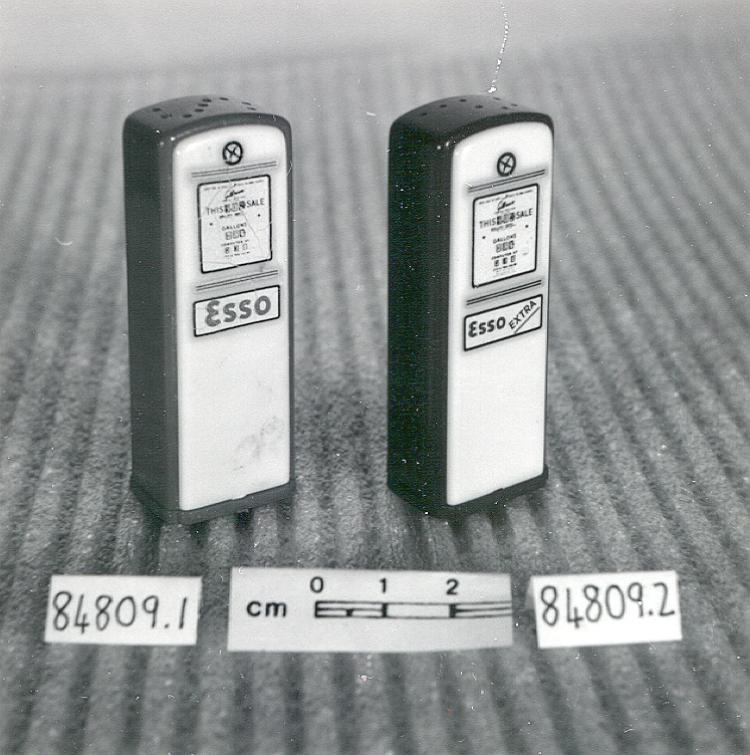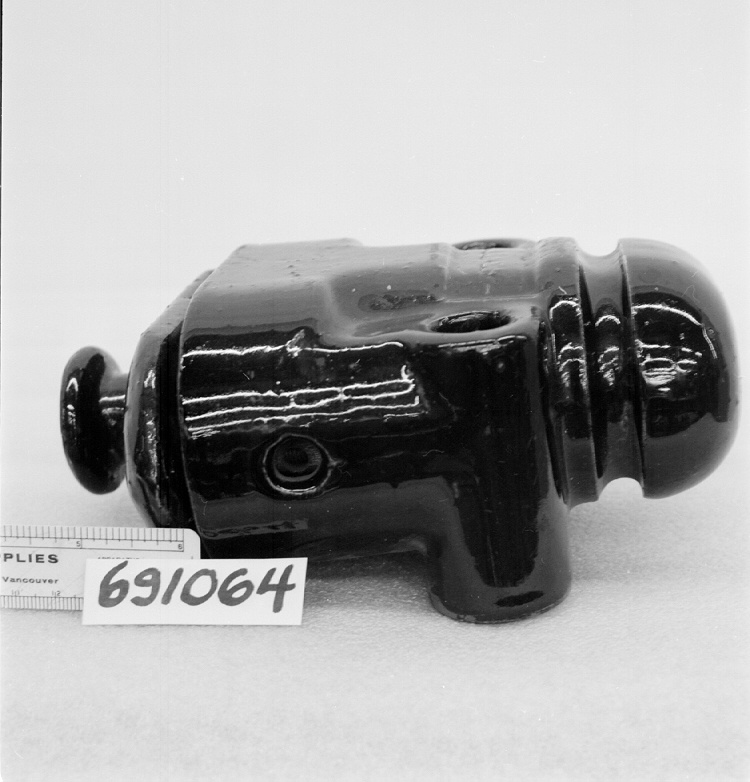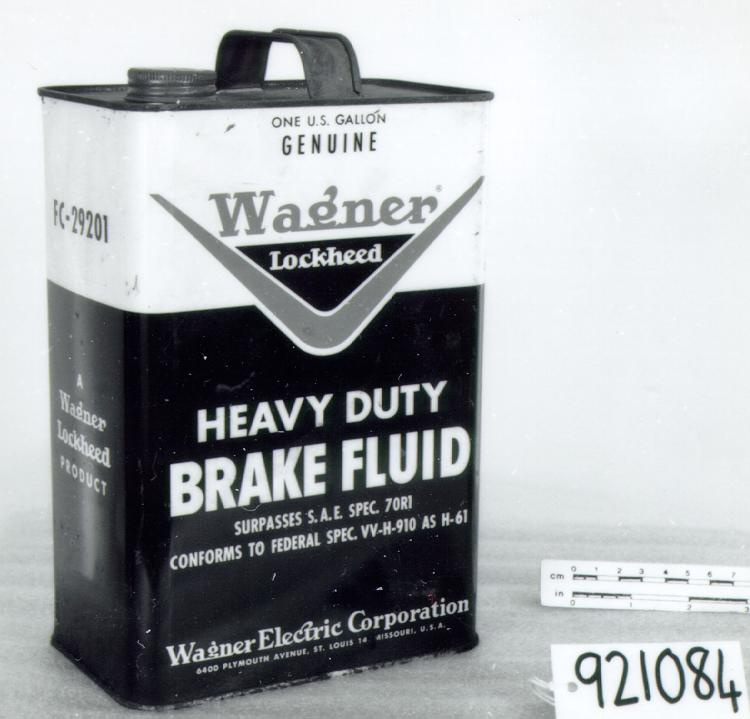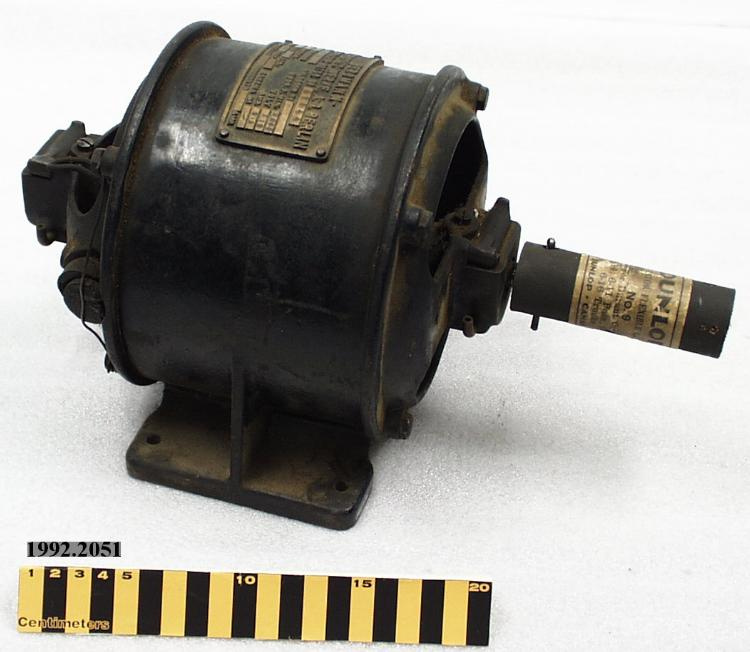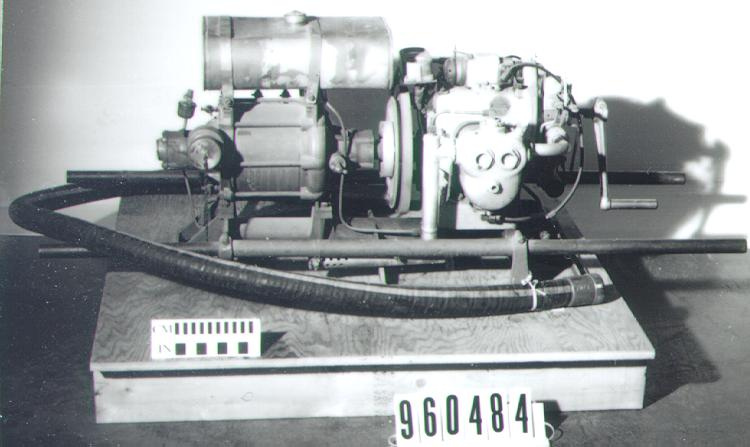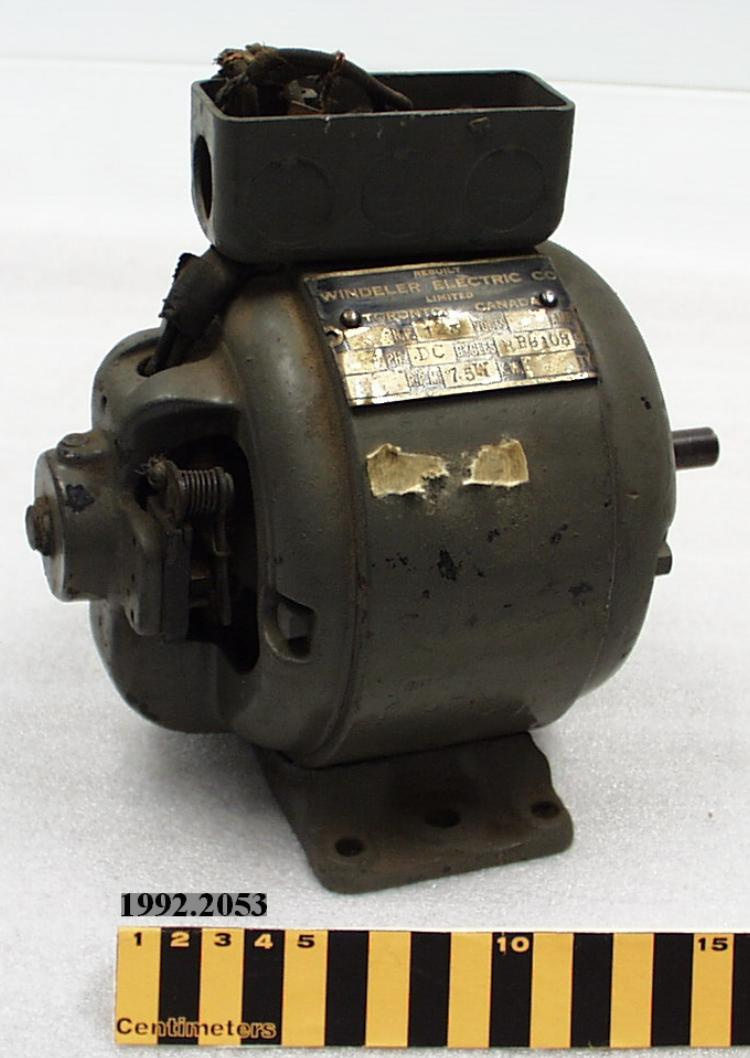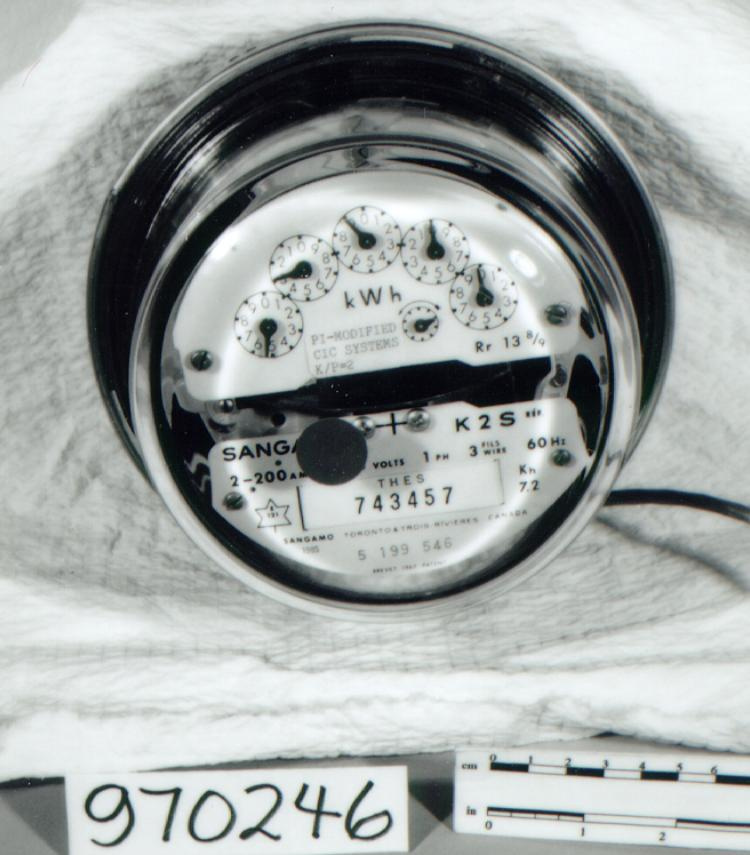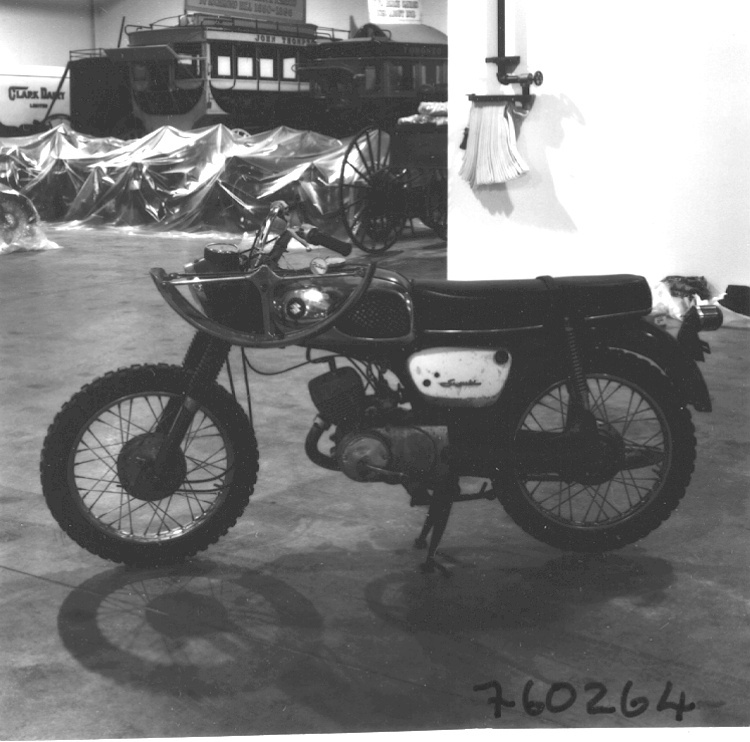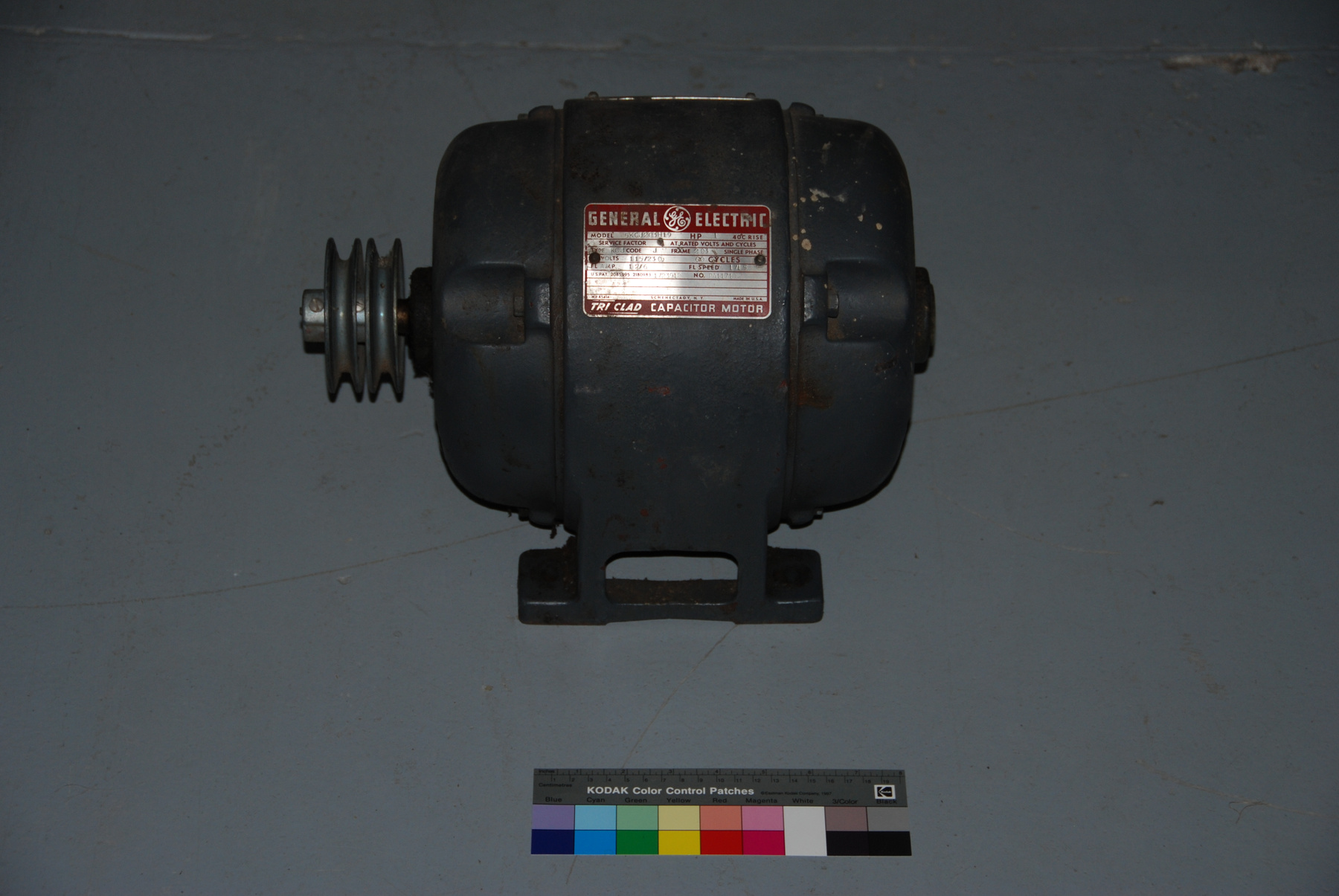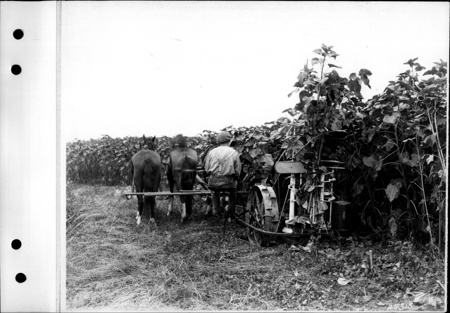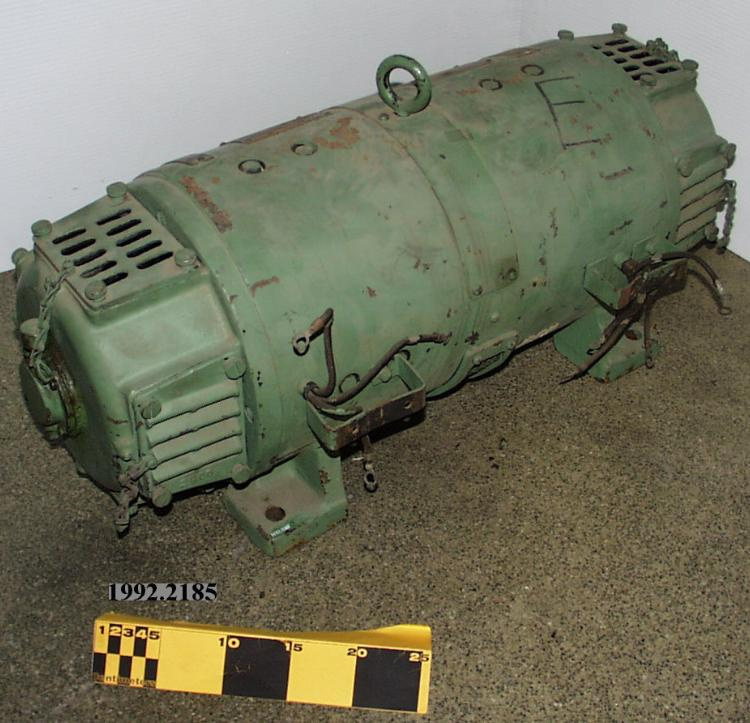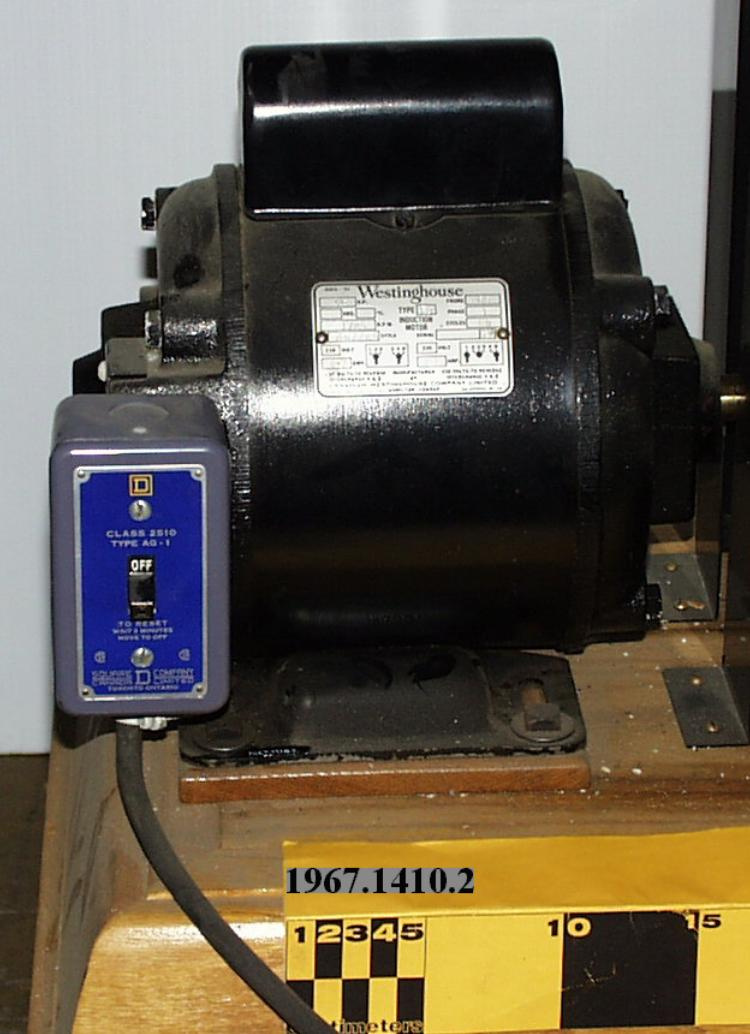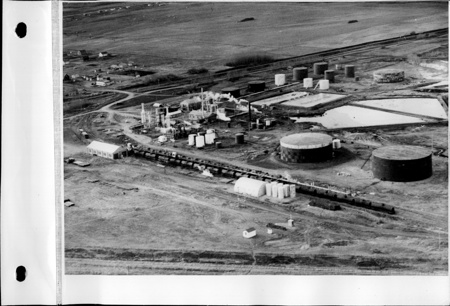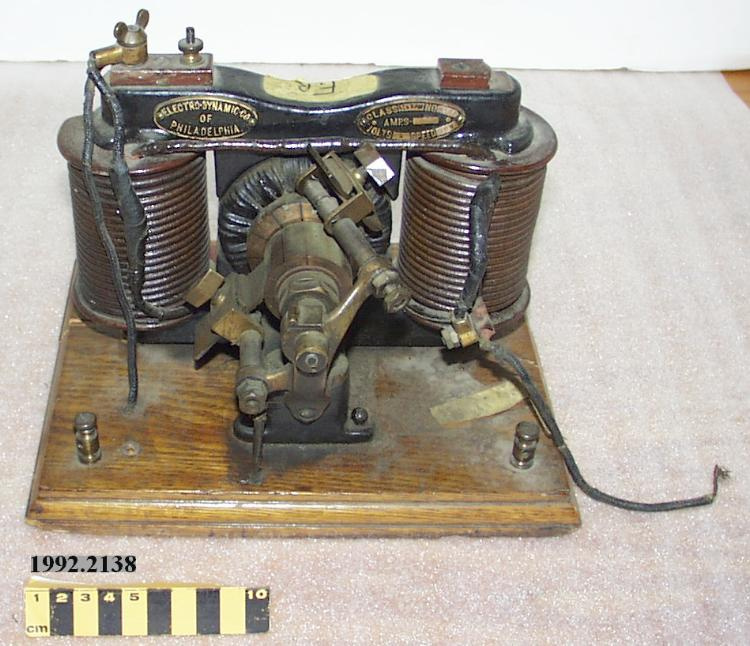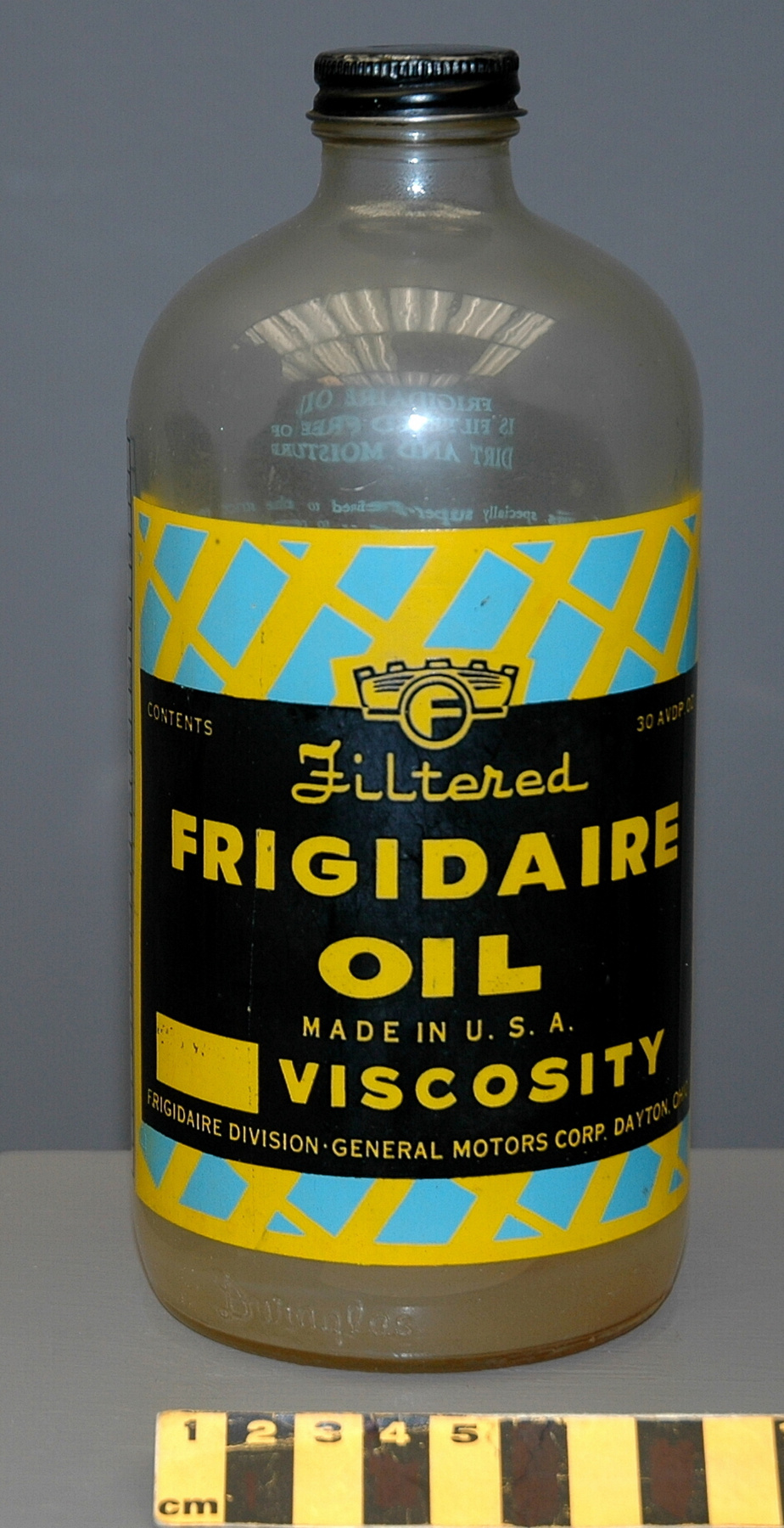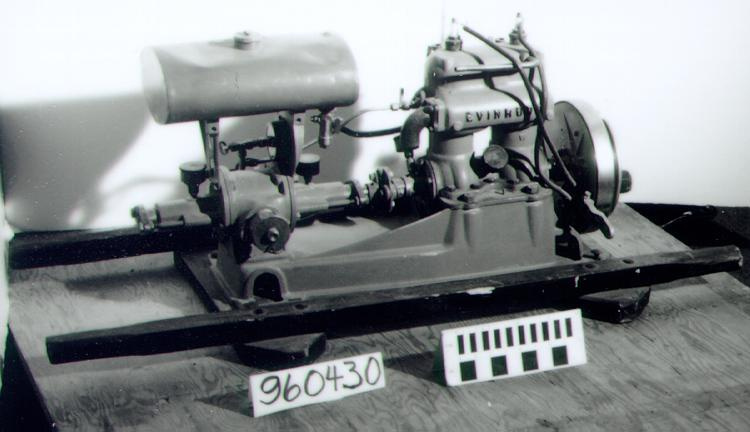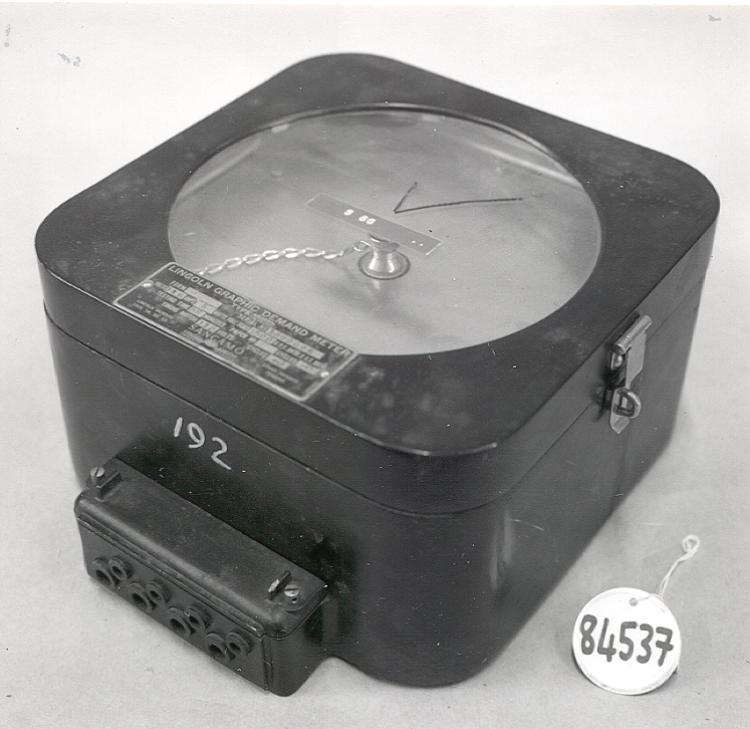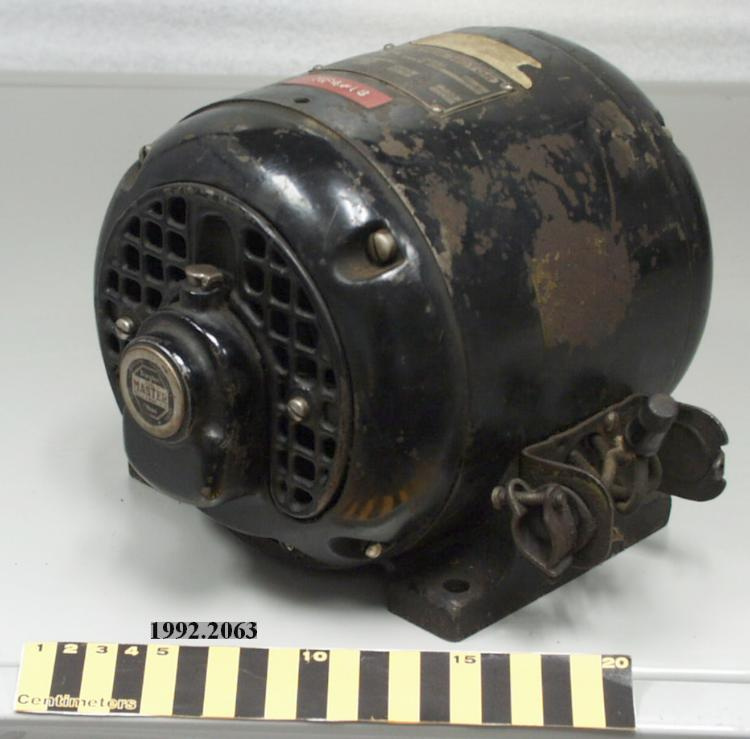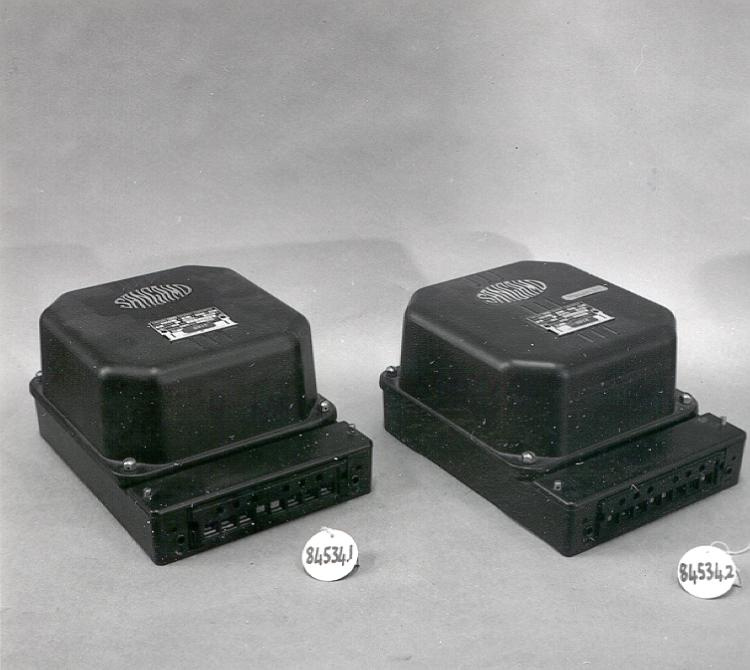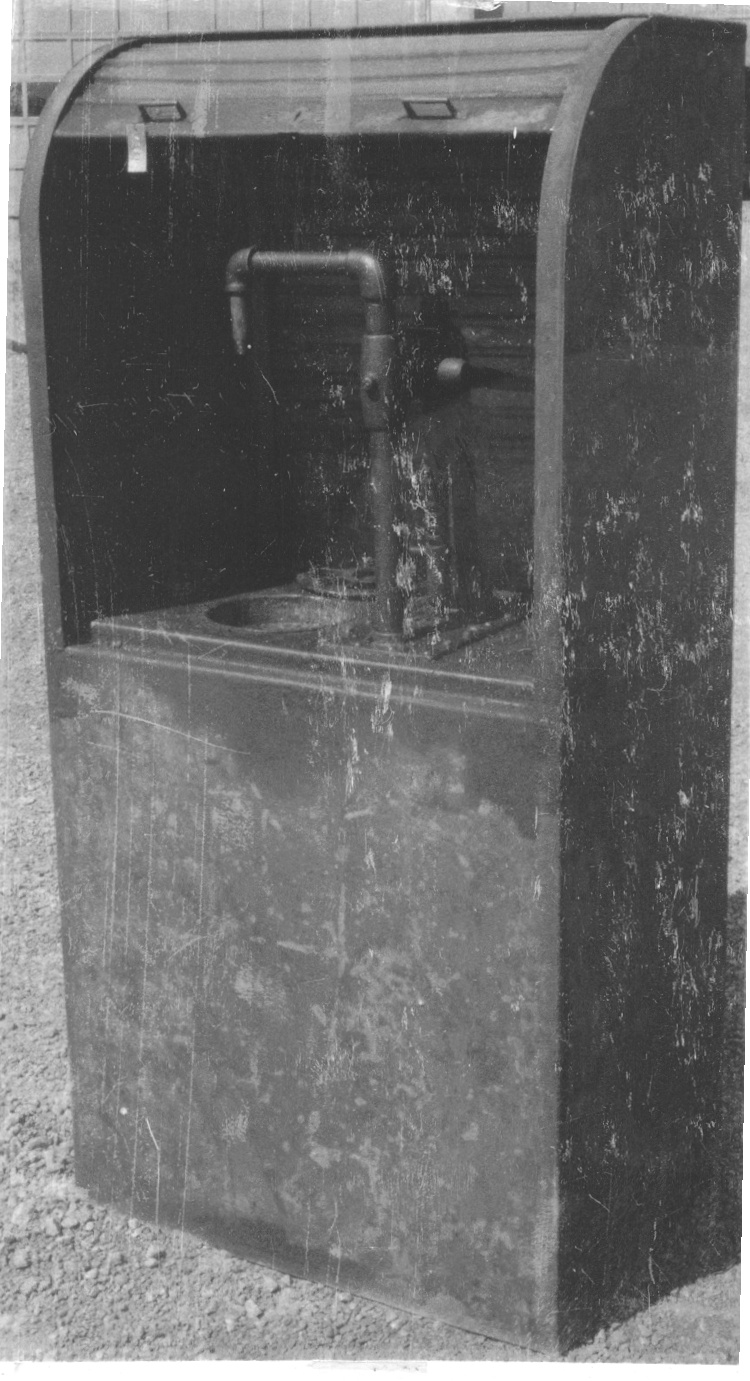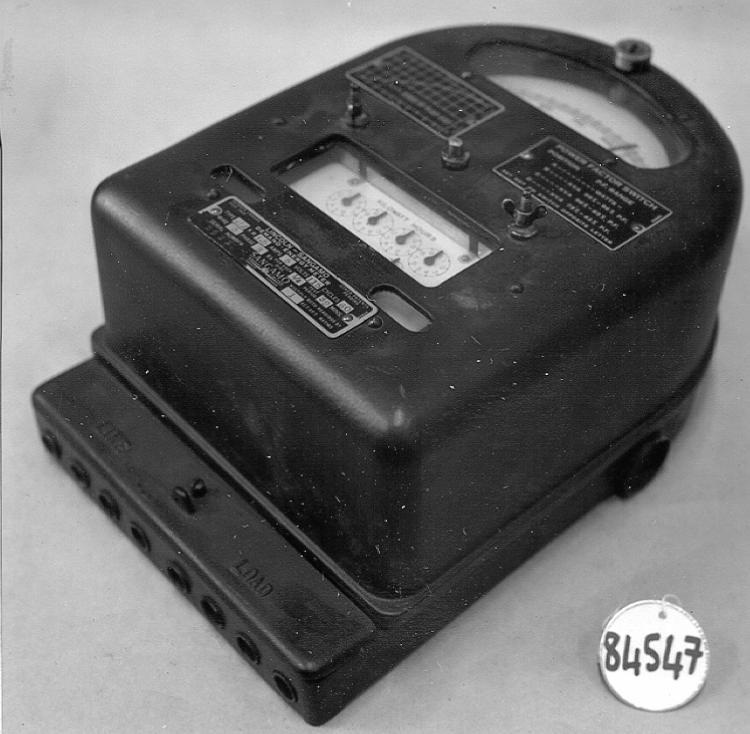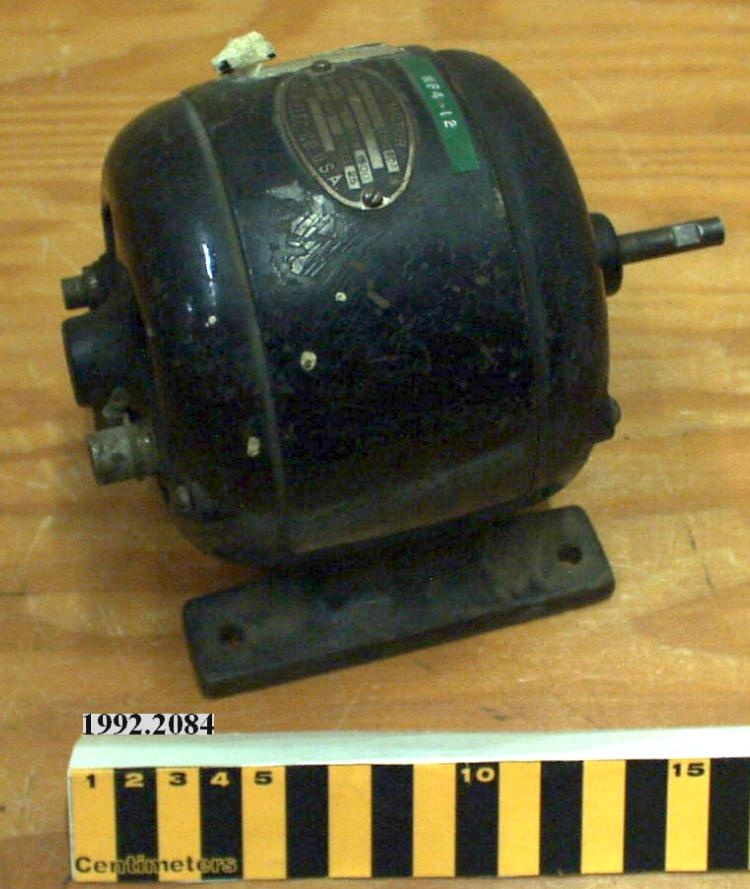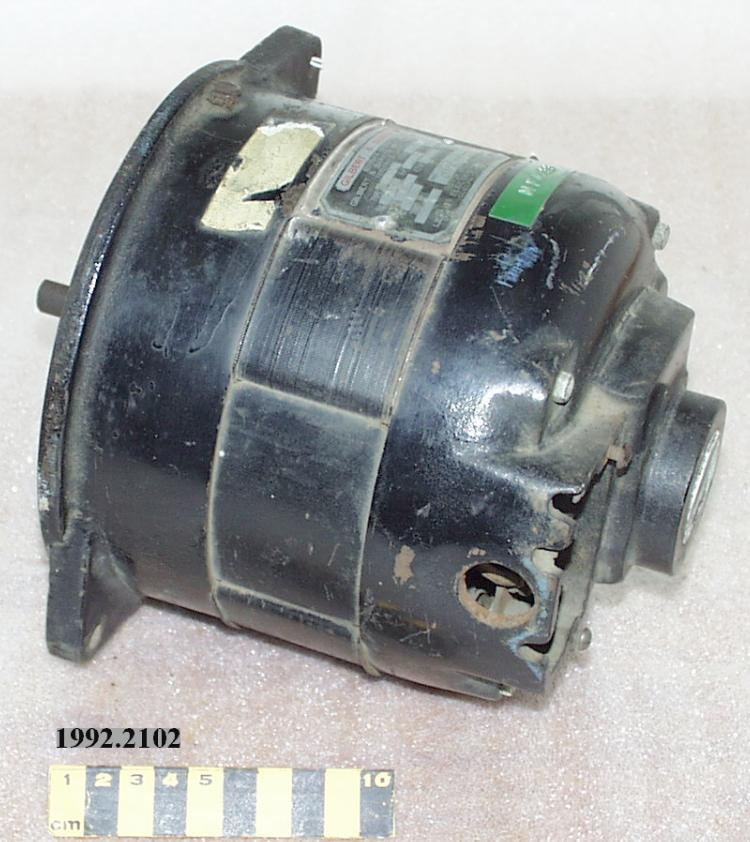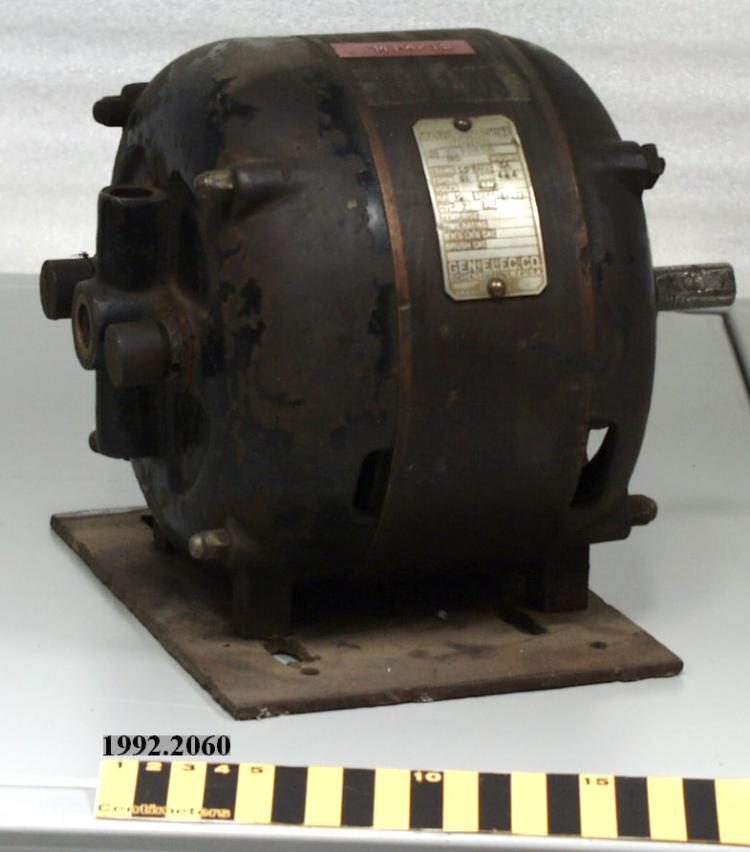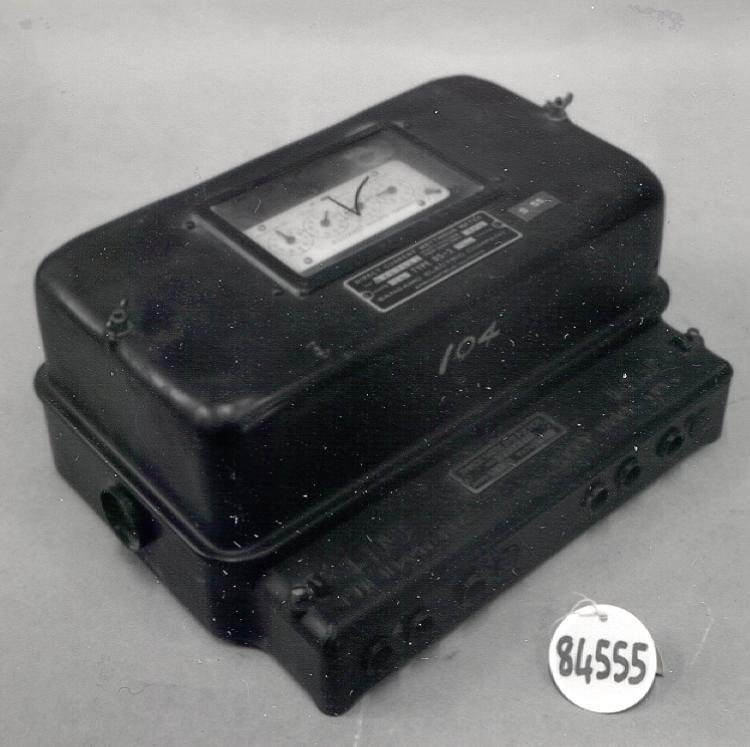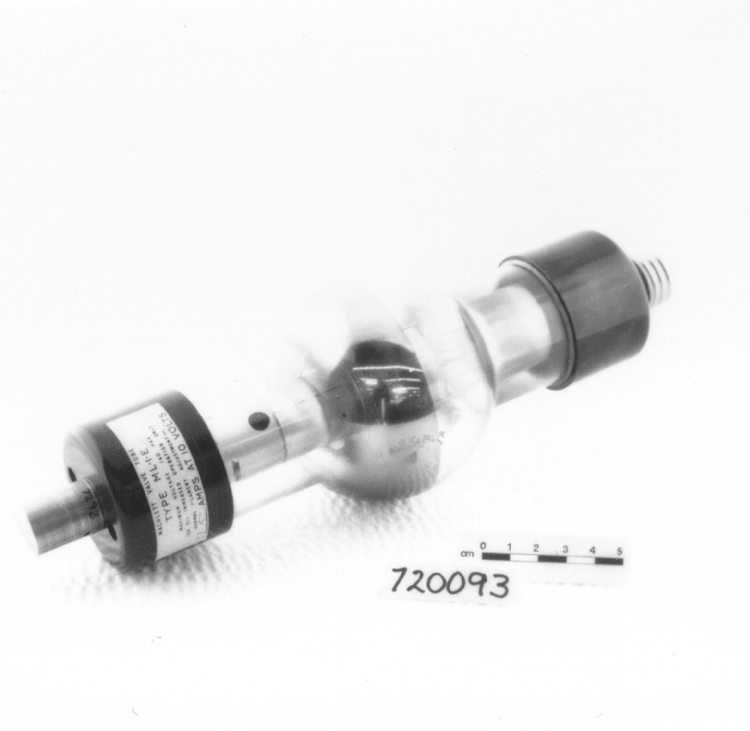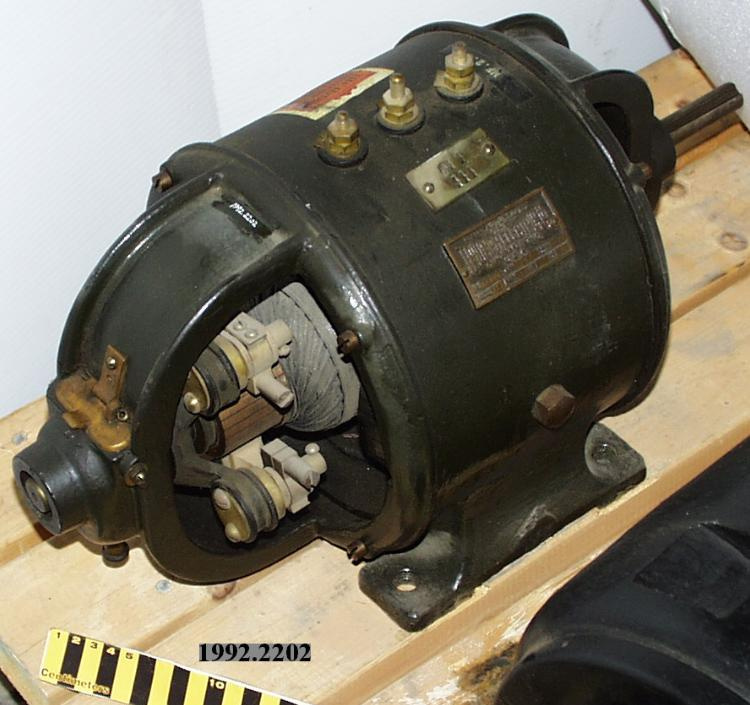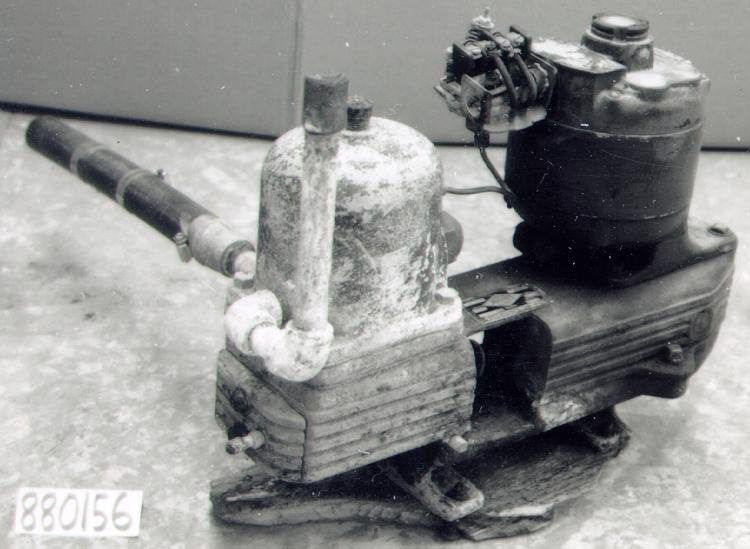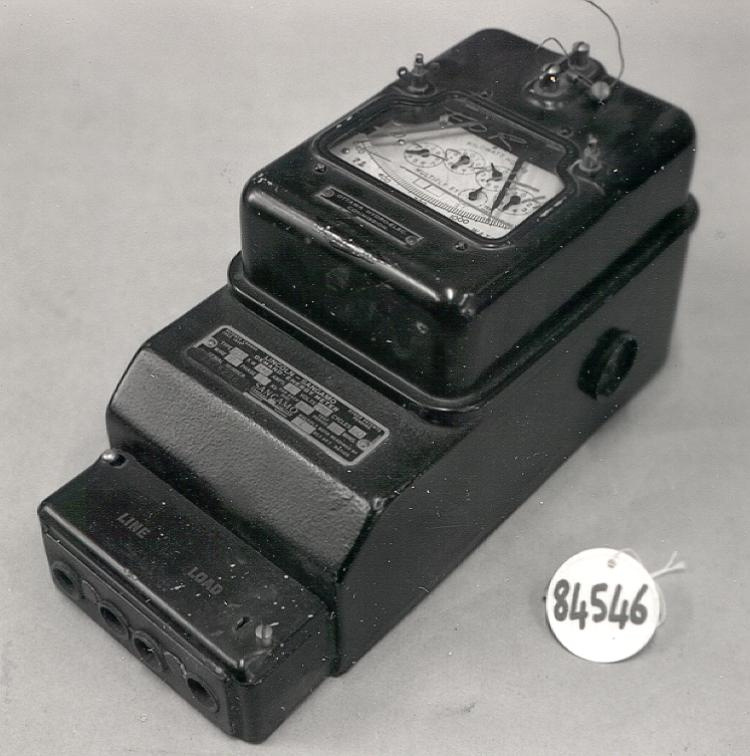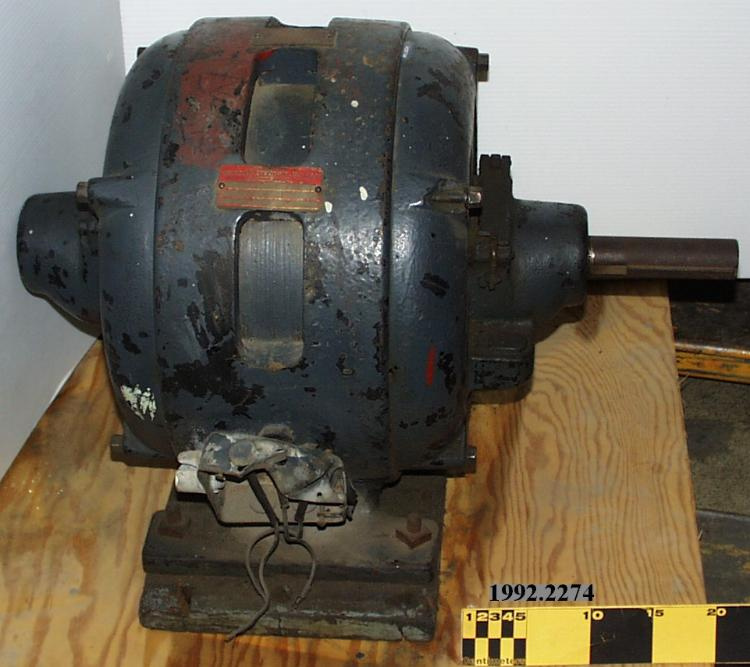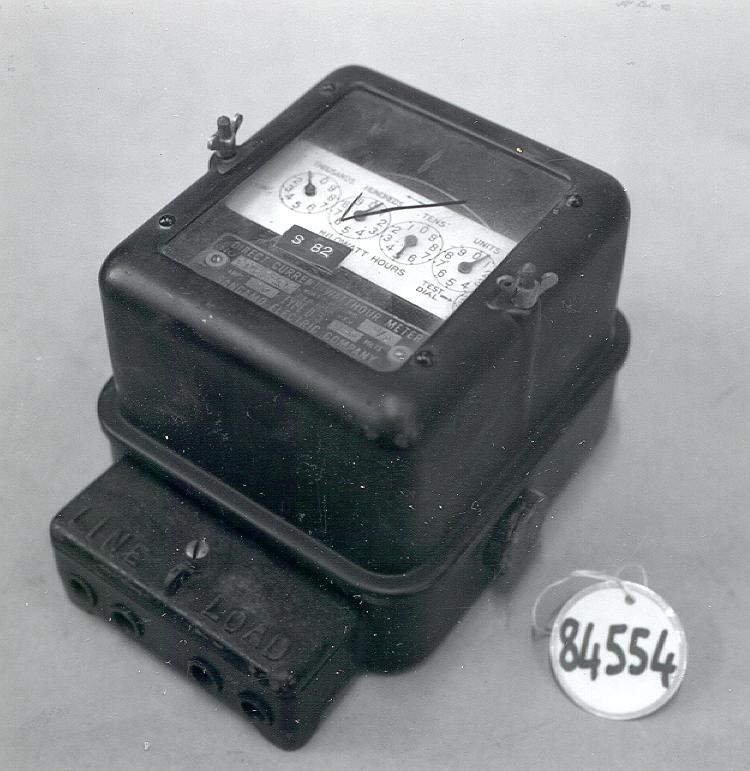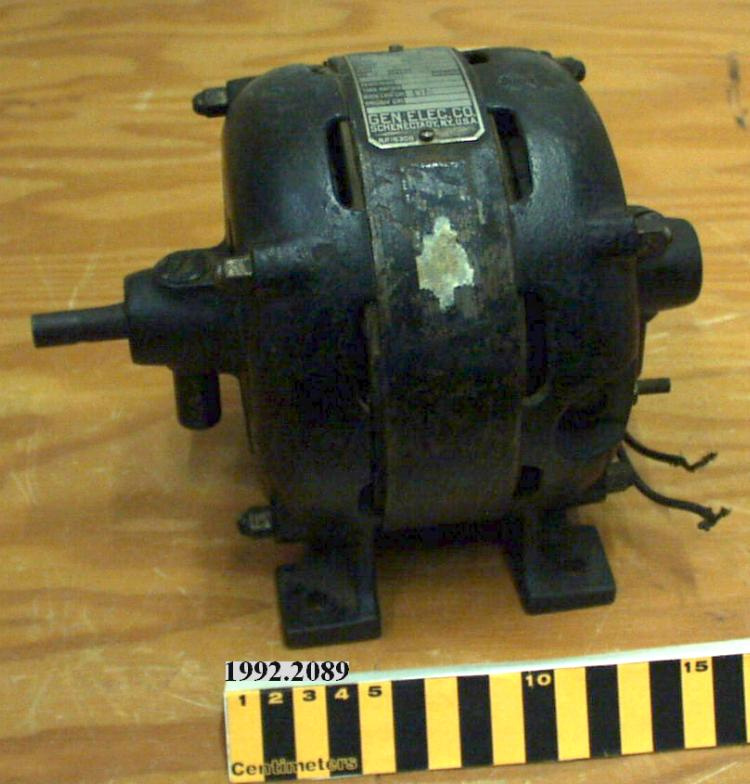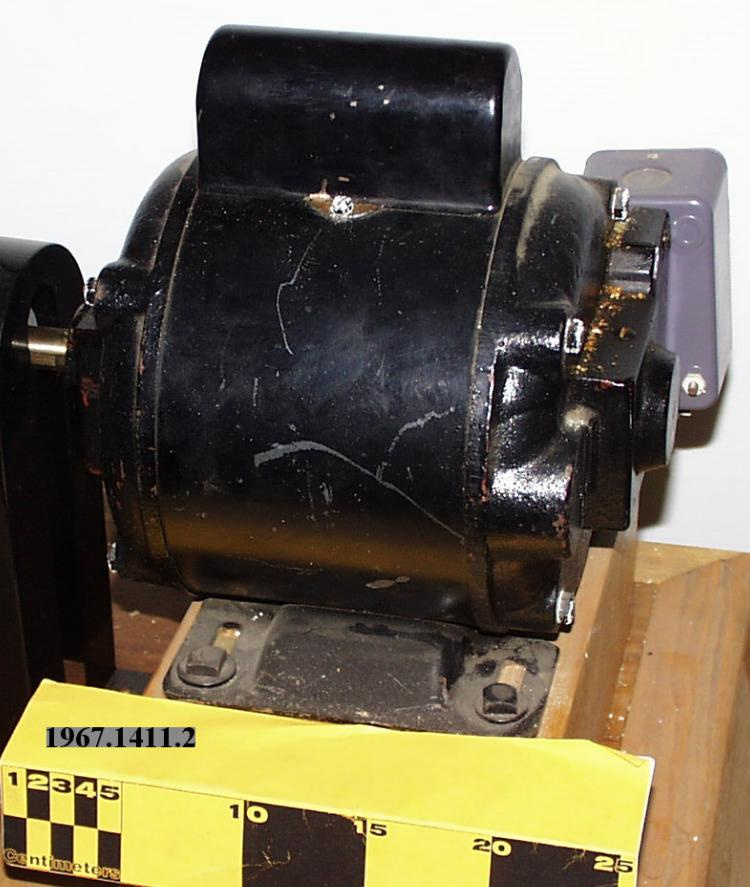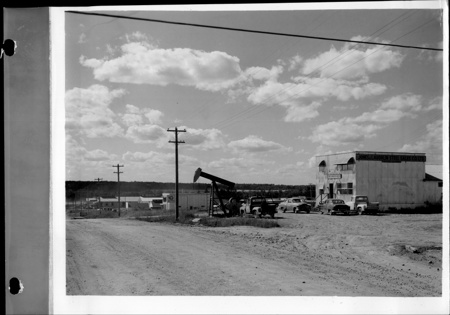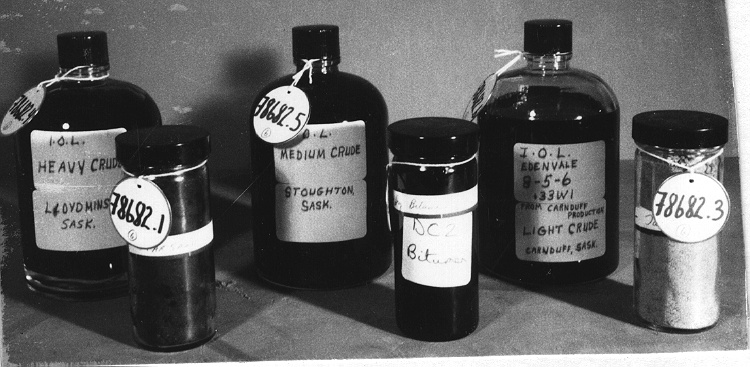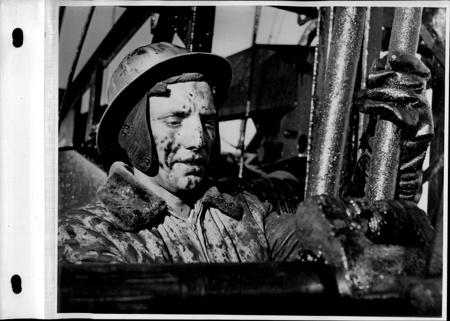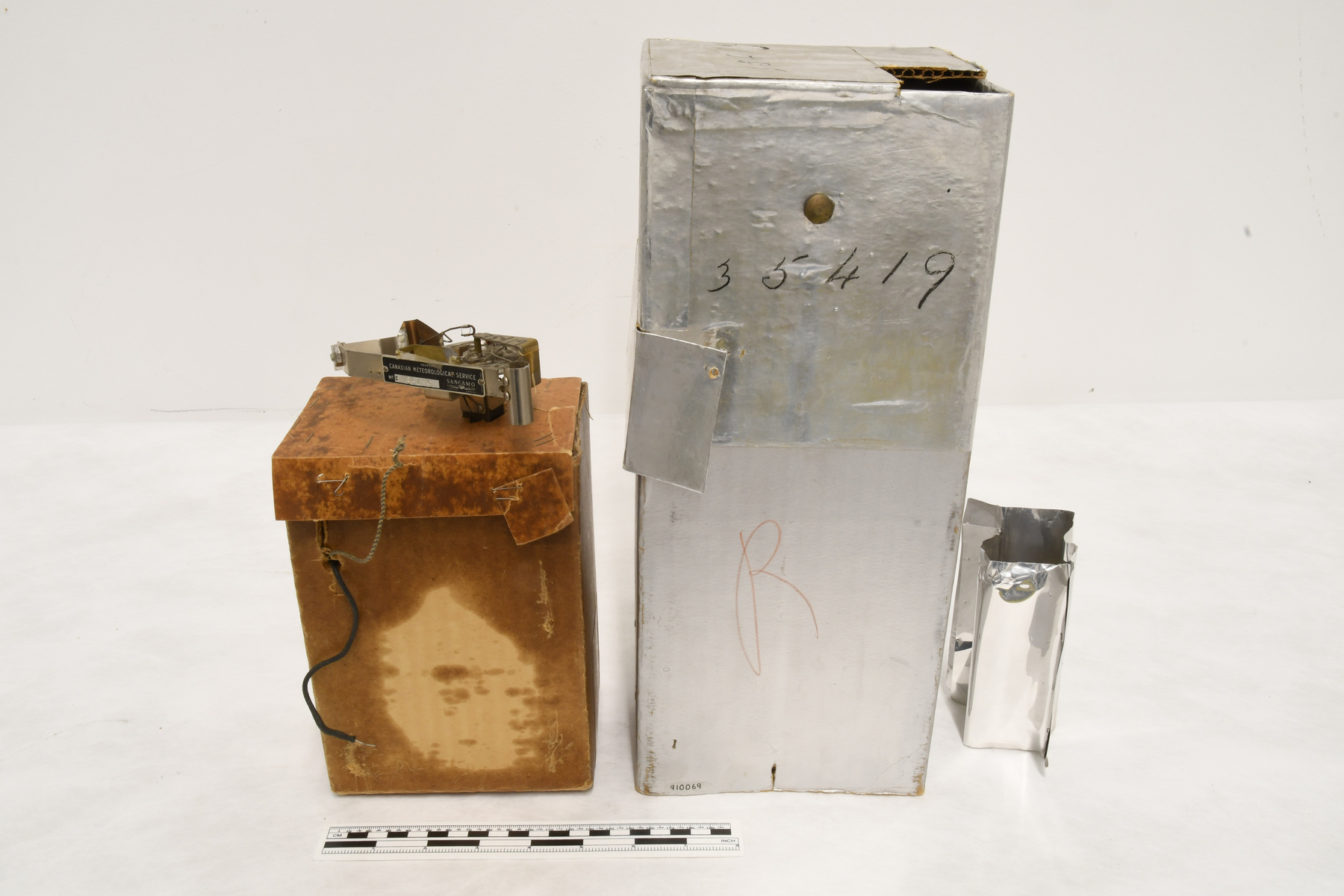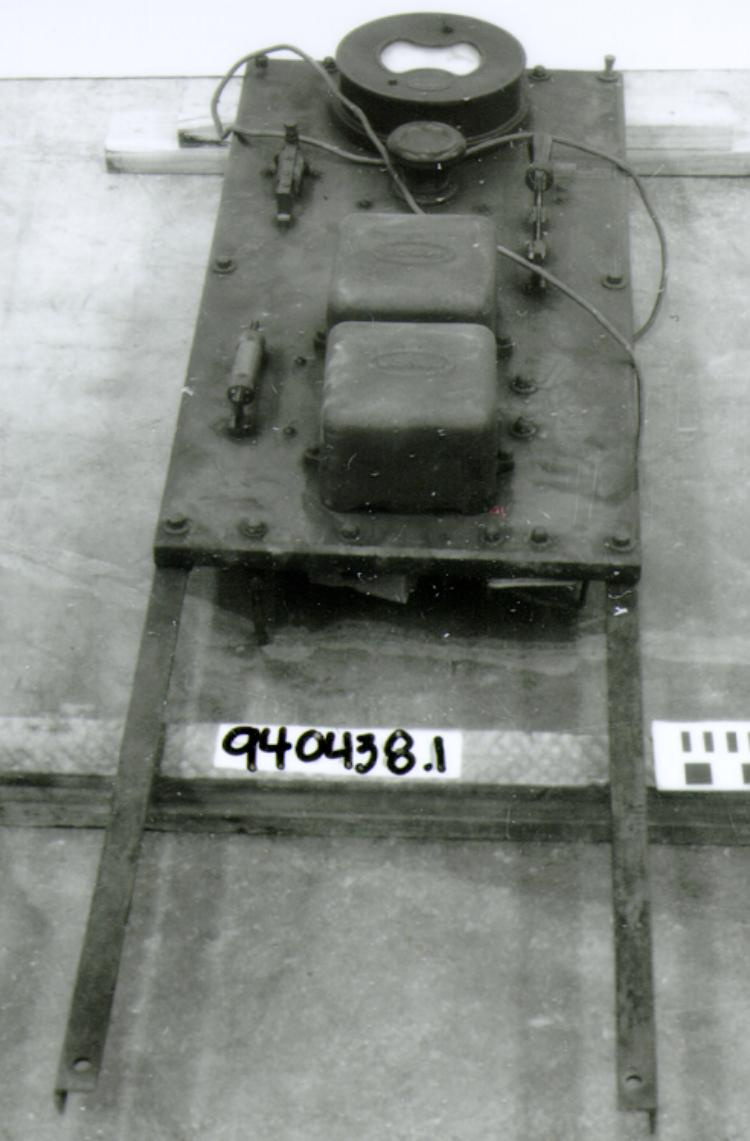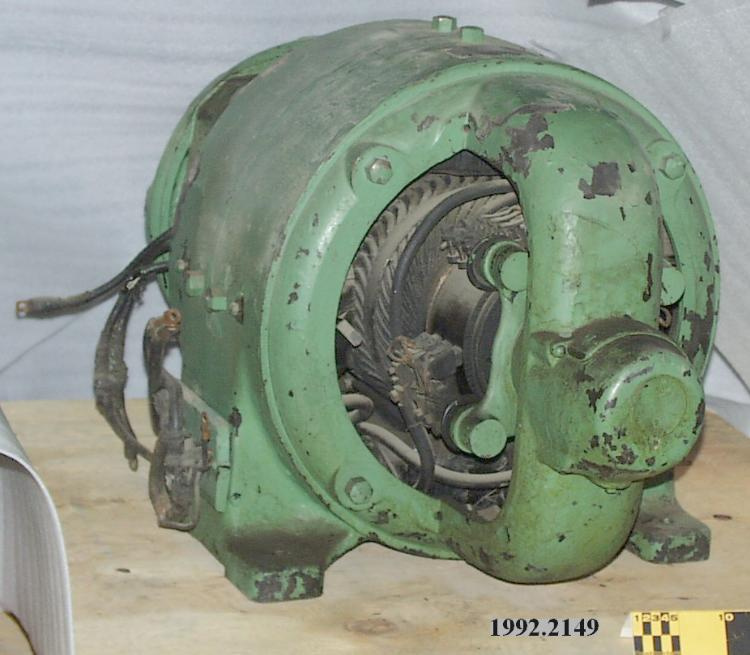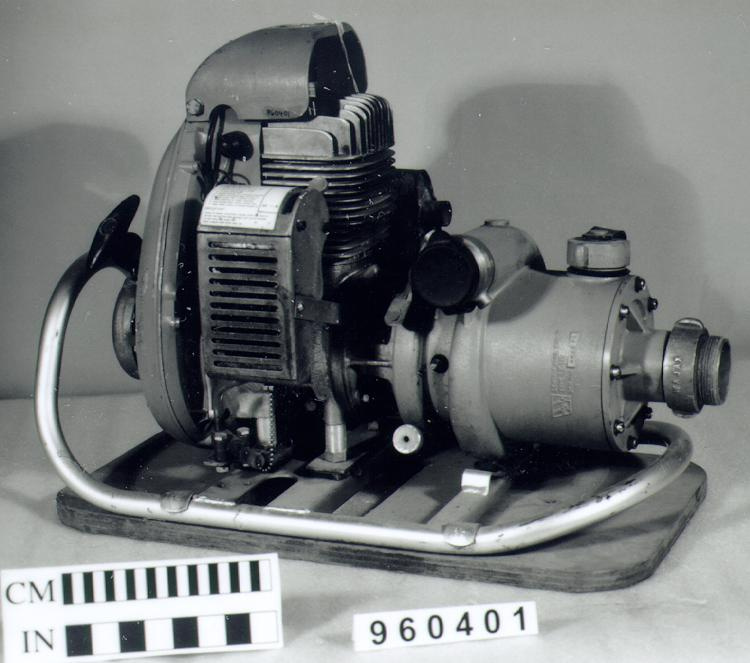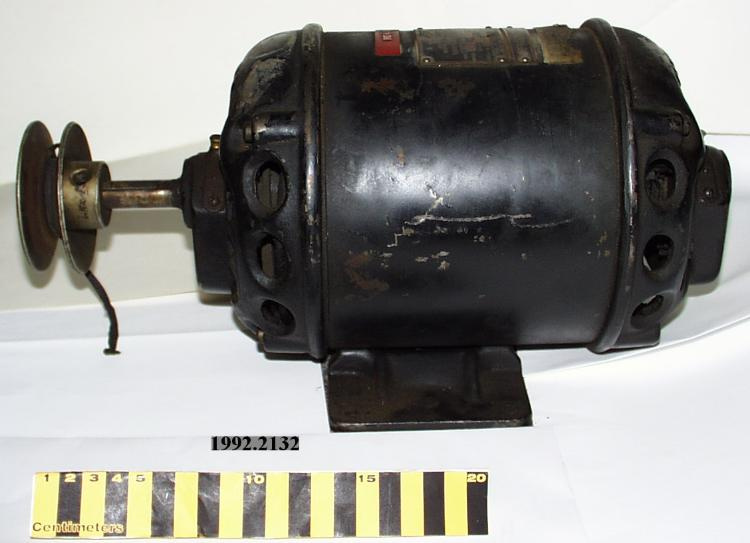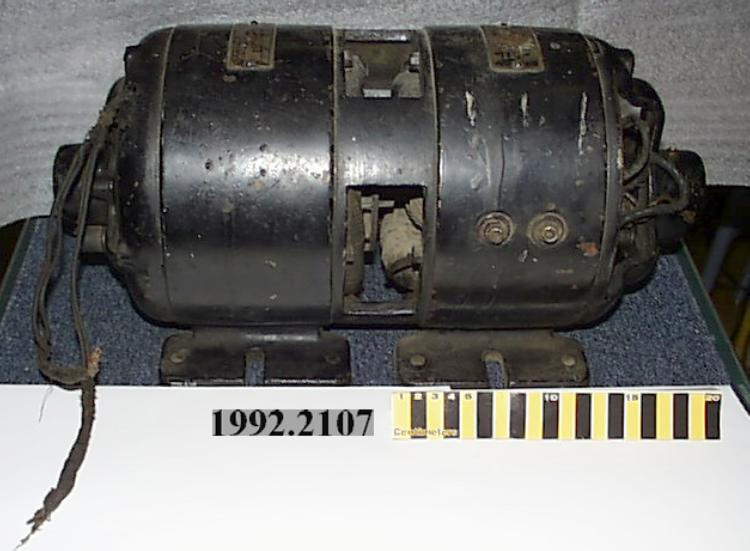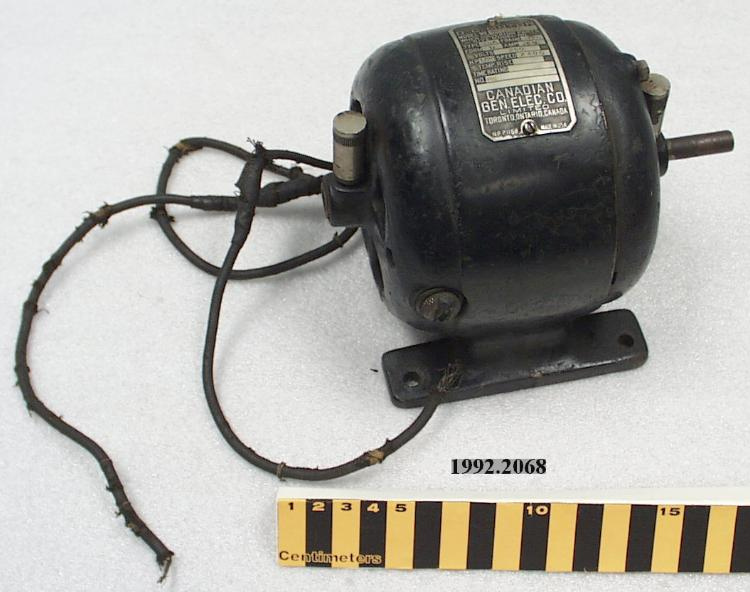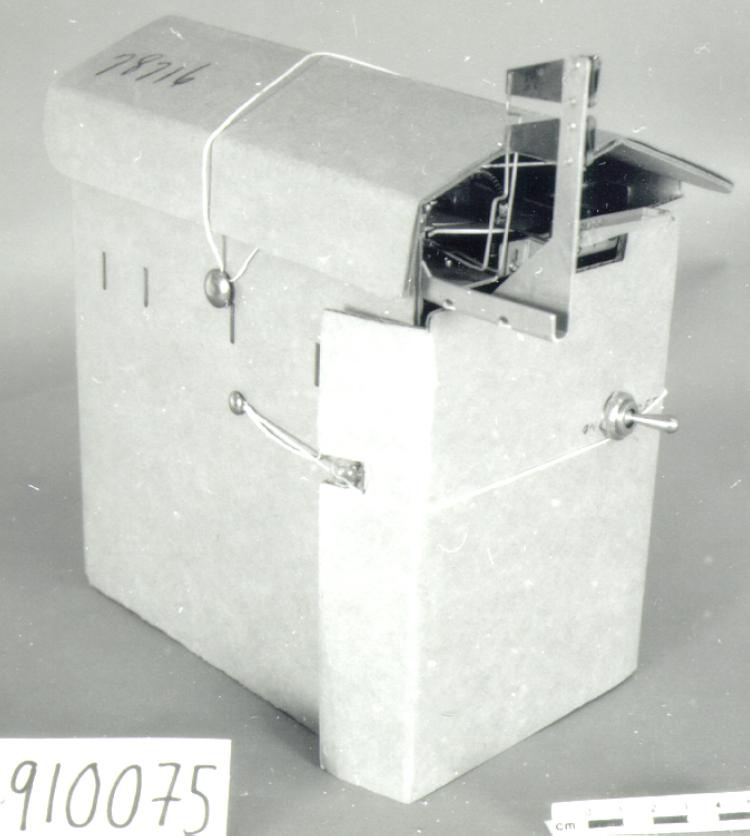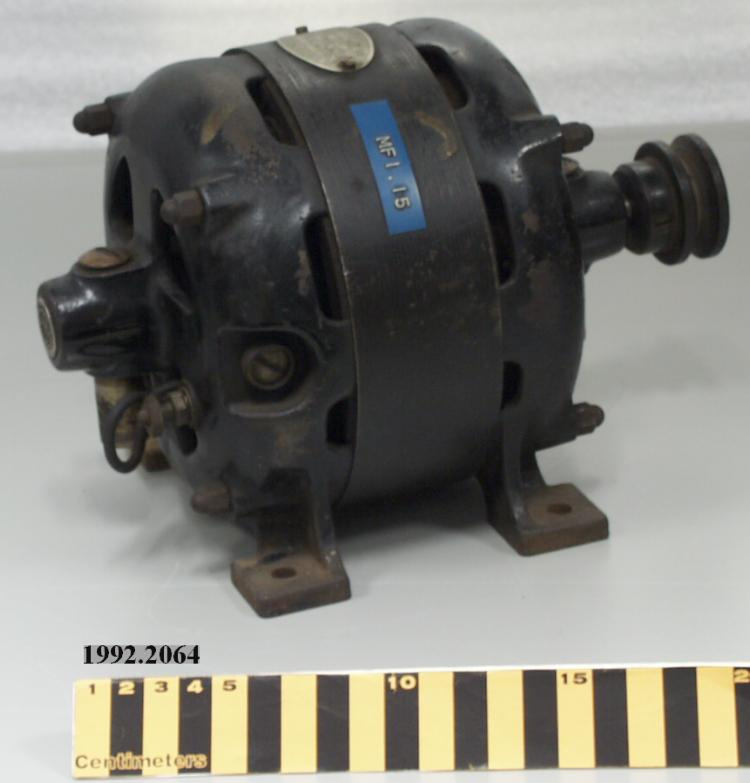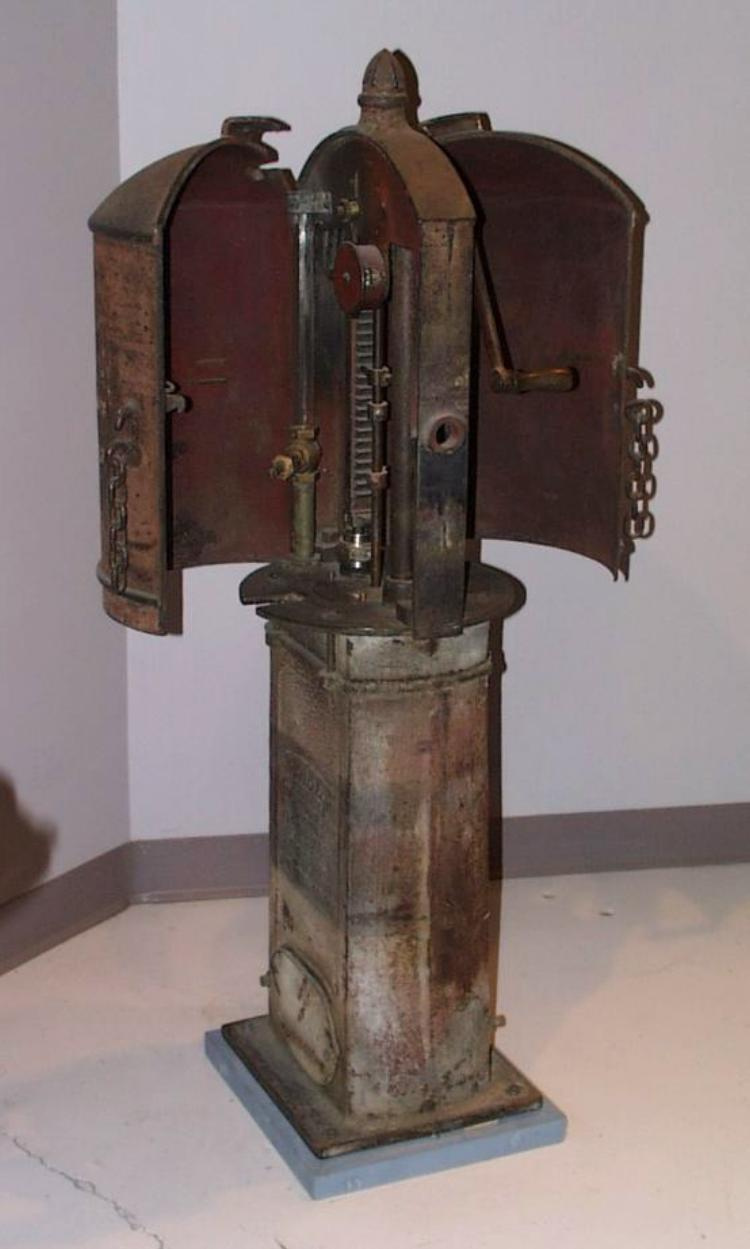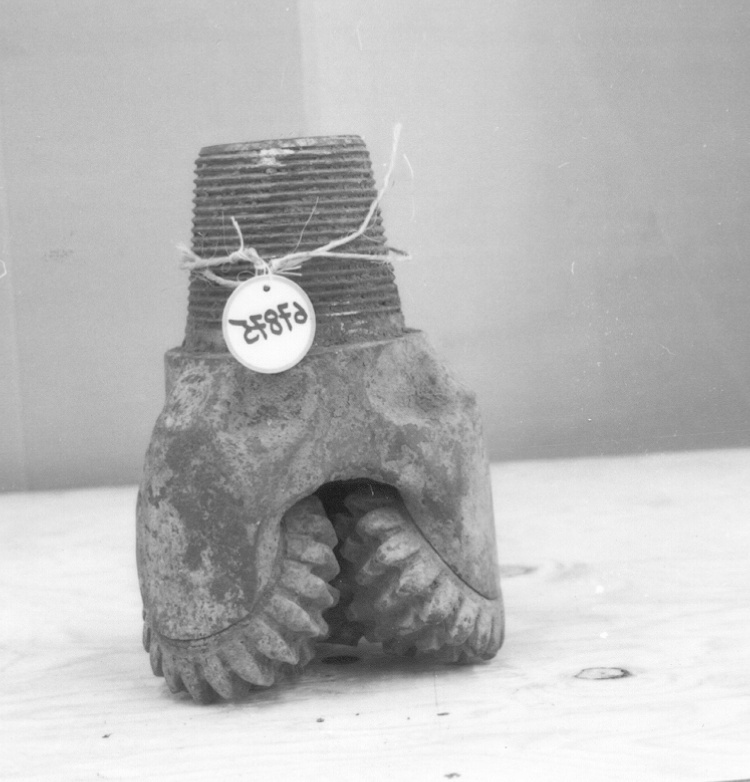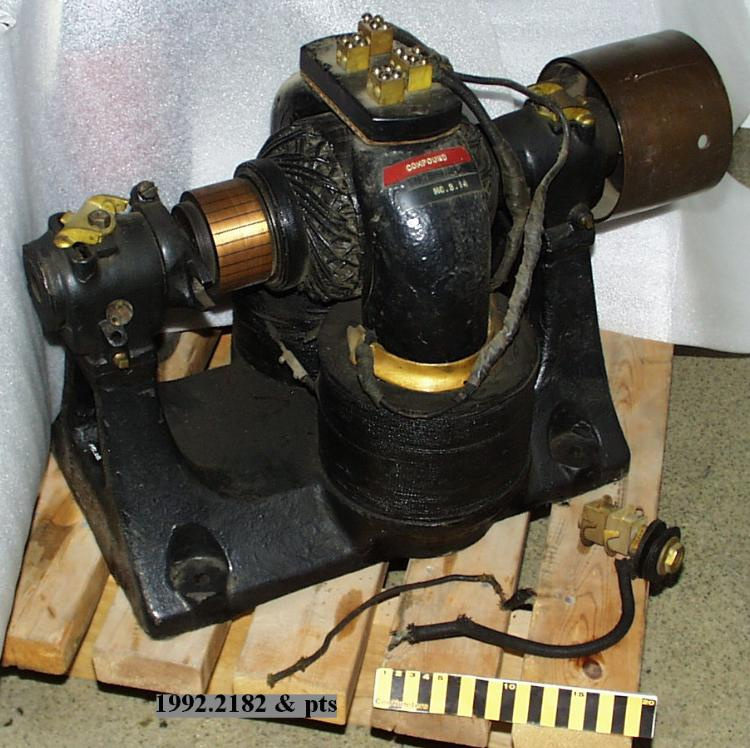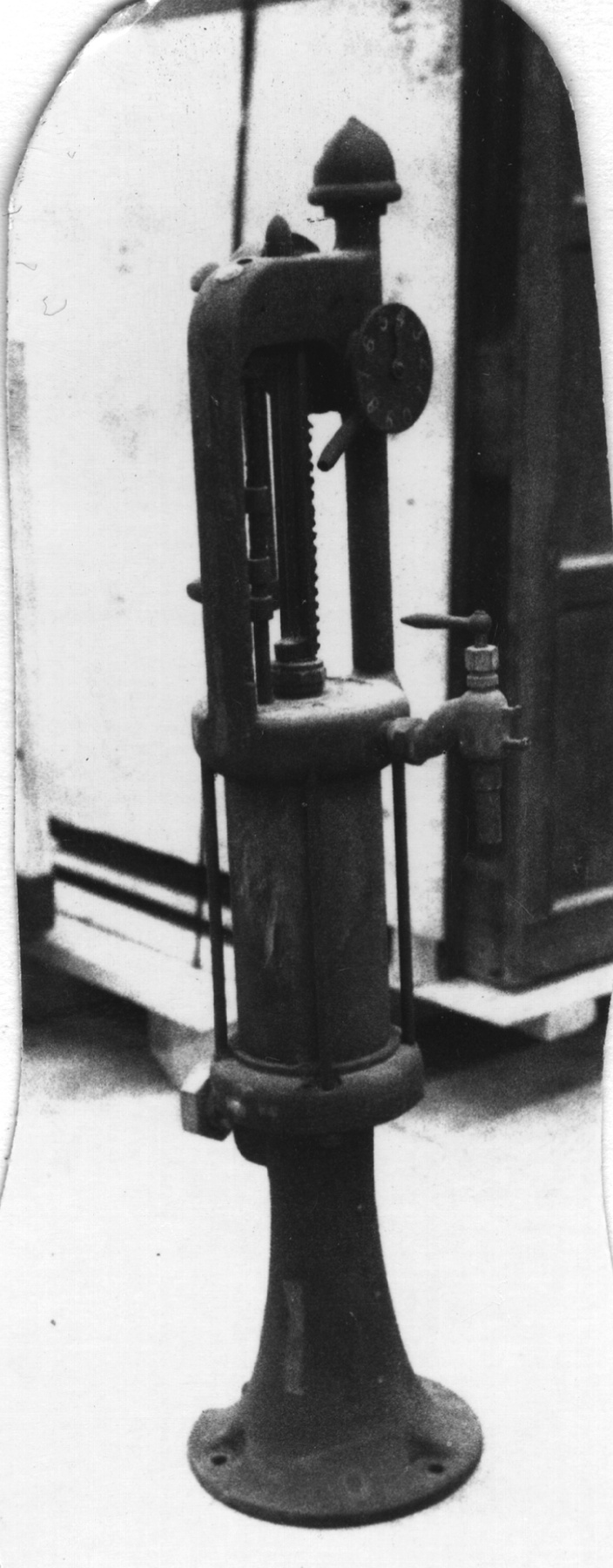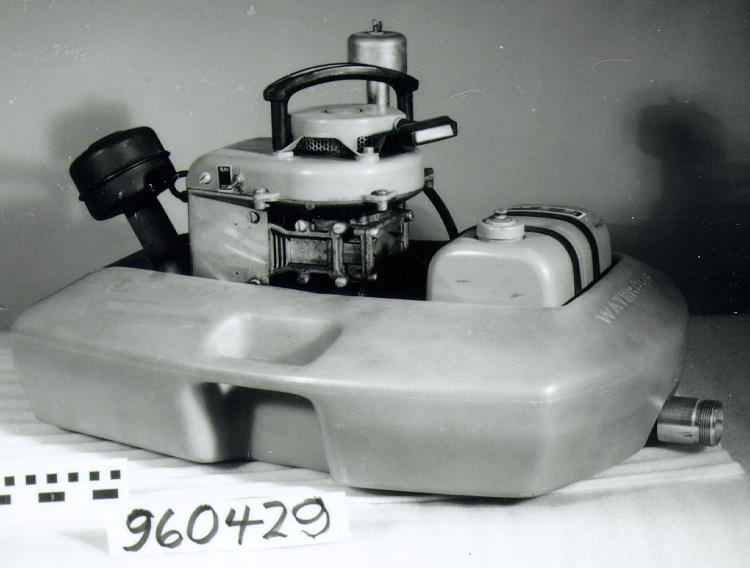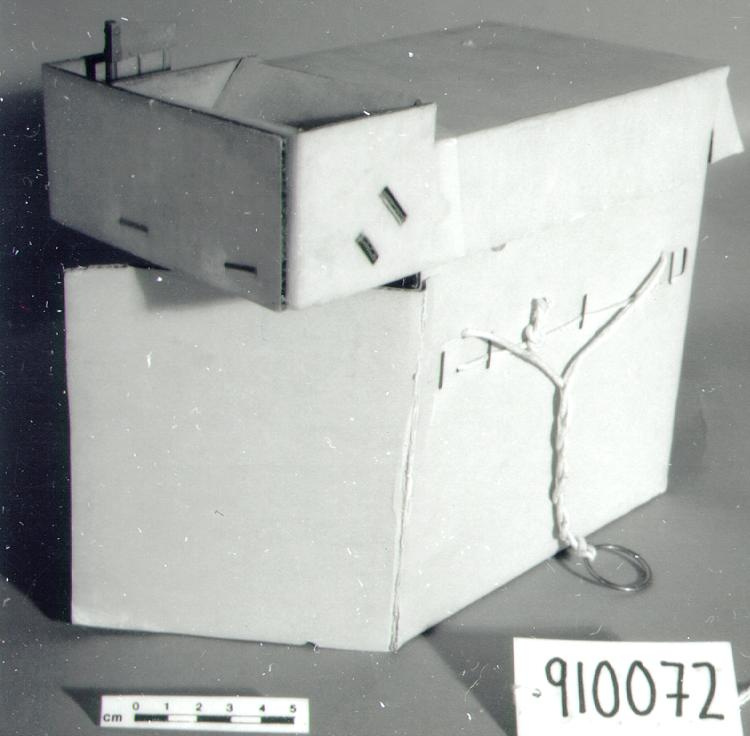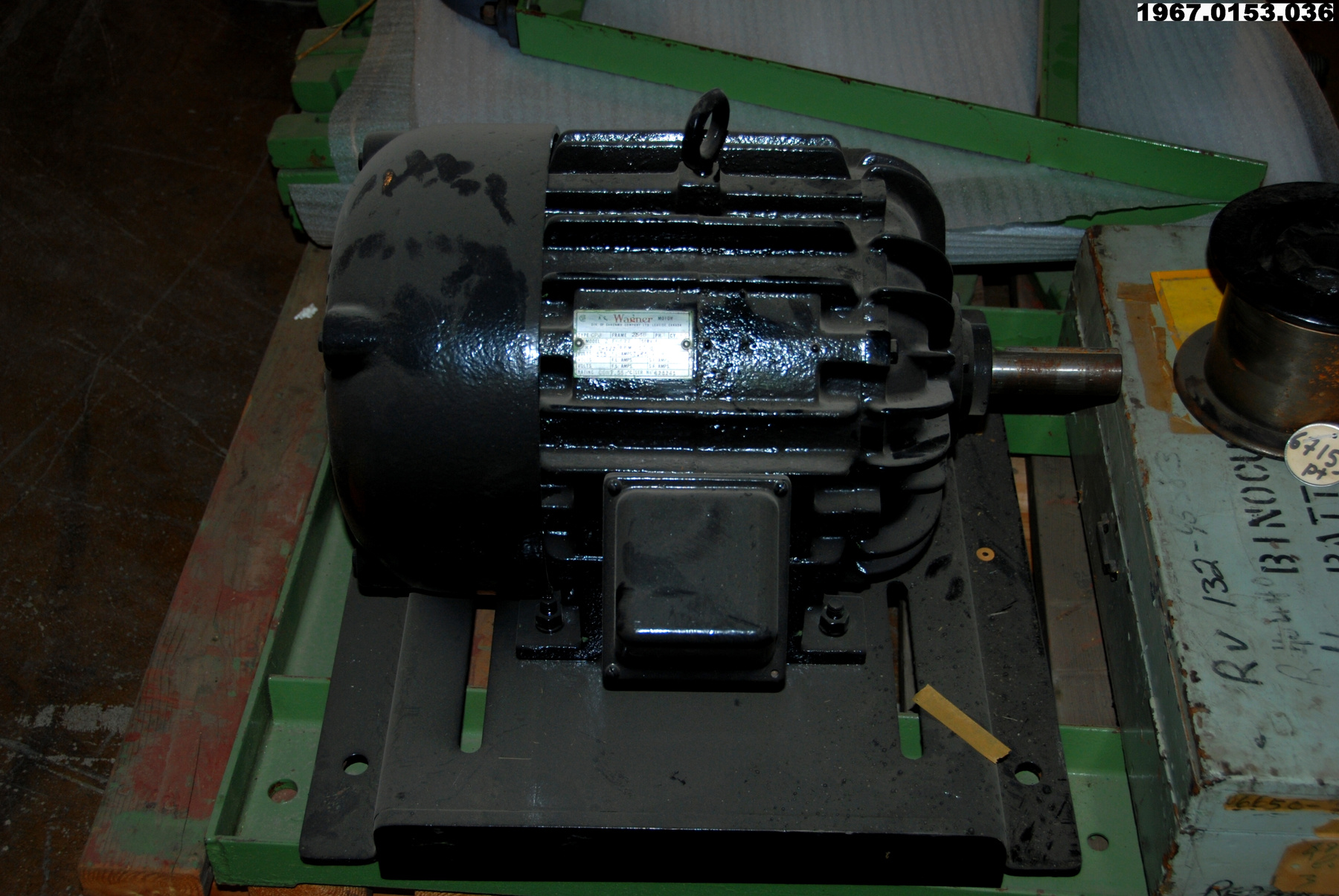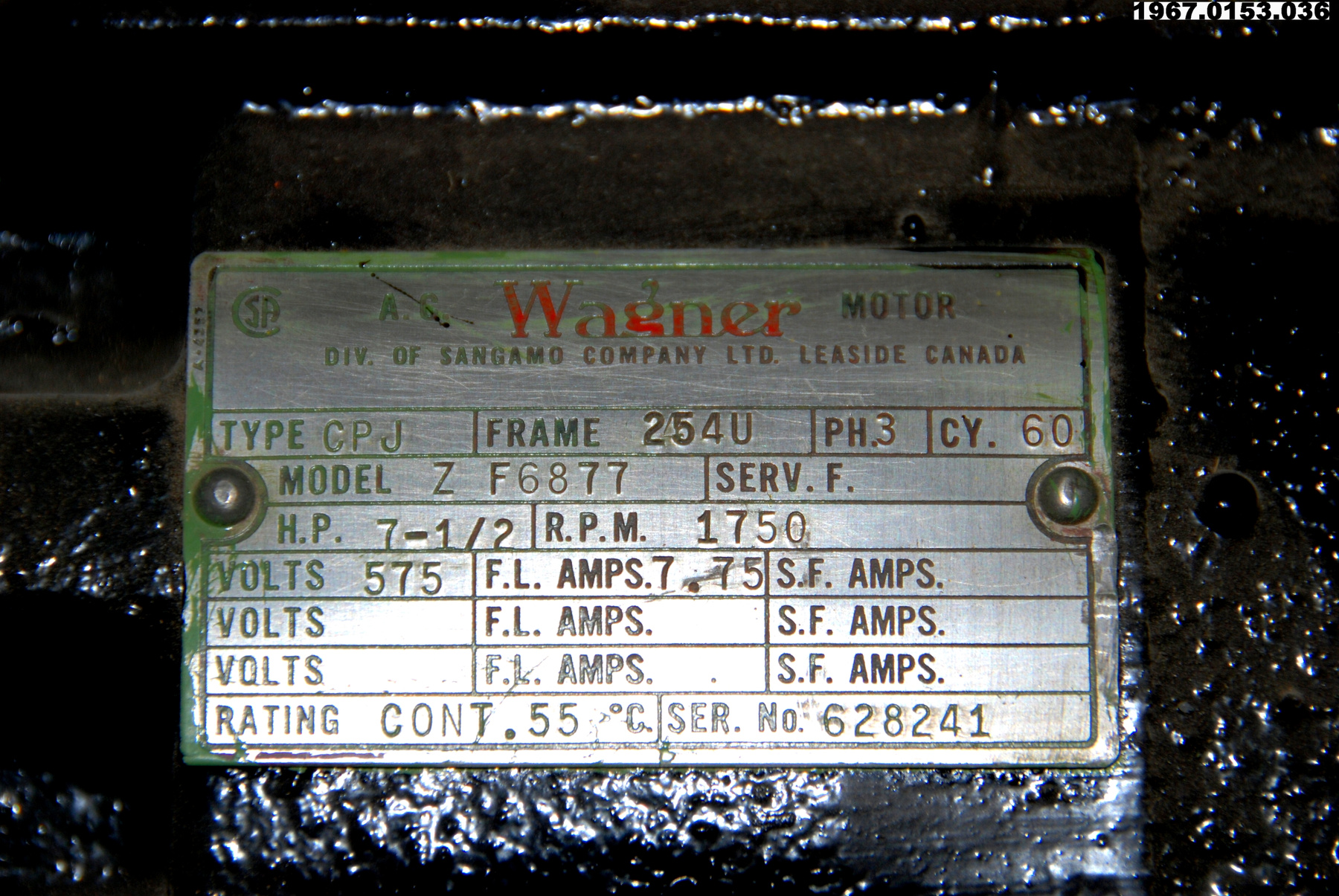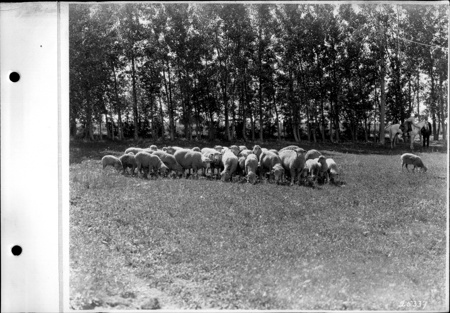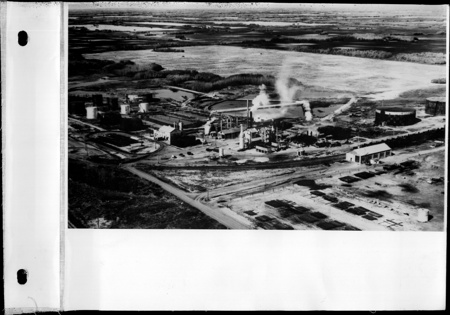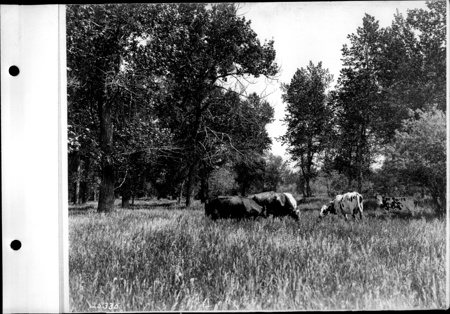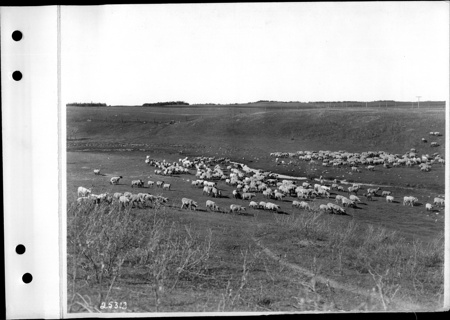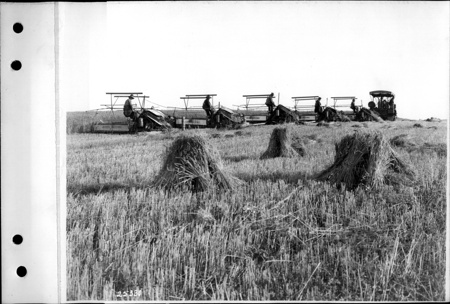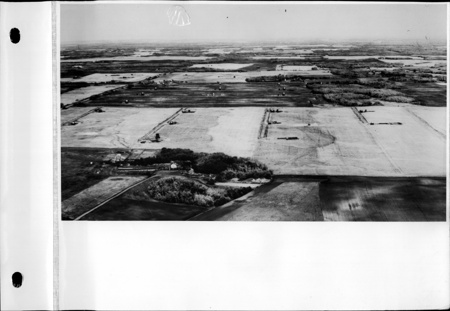Motor
Use this image
Can I reuse this image without permission? Yes
Object images on the Ingenium Collection’s portal have the following Creative Commons license:
Copyright Ingenium / CC BY-NC-ND (Attribution-NonCommercial 4.0 International (CC BY-NC 4.0)
ATTRIBUTE THIS IMAGE
Ingenium,
1967.0153.036
Permalink:
Ingenium is releasing this image under the Creative Commons licensing framework, and encourages downloading and reuse for non-commercial purposes. Please acknowledge Ingenium and cite the artifact number.
DOWNLOAD IMAGEPURCHASE THIS IMAGE
This image is free for non-commercial use.
For commercial use, please consult our Reproduction Fees and contact us to purchase the image.
- OBJECT TYPE
- AC/3 Phase/7.5 HP/60 cyc
- DATE
- Unknown
- ARTIFACT NUMBER
- 1967.0153.036
- MANUFACTURER
- Wagner Electric Div. of Sangamo
- MODEL
- Unknown
- LOCATION
- Leaside, Ontario, Canada
More Information
General Information
- Serial #
- N/A
- Part Number
- 36
- Total Parts
- 59
- AKA
- N/A
- Patents
- N/A
- General Description
- Steel
Dimensions
Note: These reflect the general size for storage and are not necessarily representative of the object's true dimensions.
- Length
- N/A
- Width
- N/A
- Height
- N/A
- Thickness
- N/A
- Weight
- N/A
- Diameter
- N/A
- Volume
- N/A
Lexicon
- Group
- Industrial Technology
- Category
- Power sources
- Sub-Category
- N/A
Manufacturer
- AKA
- Sangamo
- Country
- Canada
- State/Province
- Ontario
- City
- Leaside
Context
- Country
- Canada
- State/Province
- Saskatchewan
- Period
- During the 1950s.
- Canada
-
The first attempts at oil exploitation in the province of Saskatchewan were made in 1906, with the drilling of a wildcat well by Canadian Northern Railways, approximately 50 km outside of Saskatoon. Although this well was dry, it marked the beginning of the emerging oil market that was to influence the economic development of Saskatchewan. The Lloydminster Gas Company first drilled the Blairmore oil field, which straddles the Alberta-Saskatchewan border, for the commercial extraction of natural gas in 1933. By May of 1934, it had obtained the franchise rights to distribute natural gas to the town of Lloydminster. In September of that year, Lloydminster became the first town in Saskatchewan to use natural gas as a fuel source. Natural gas pockets tend to indicate the presence of oil reservoirs and in 1936, oil -although not commercially viable quantities - was discovered on the Saskatchewan side of the Blairmore oil field. It took 38 years and 229 holes for a commercially viable well to be discovered in Saskatchewan in 1944. By the year's end in 1955, Saskatchewan had 447 viable wells in eight oil fields, most of which produced heavy oils. This pump jack was used in the 1950's and was received in 1967 from the Canadian Petroleum Association (Canadian Association of Petroleum Producers) from Saskatchewan. This pump jack was used during the post-World War II exponential growth of the oil industry in Saskatchewan. - Function
-
Electric motor that drives the pitman arm. - Technical
-
A pump jack is used to extract oil when the bottom hole pressure of a well is insufficient for the oil to flow freely to the surface or when the viscosity of the oil being extracted is too high for free flow to the surface. The working beam is driven by a gas or electric motor through a gear box that changes the plane of the applied force so that the pumping action is created. Pump Jacks, similar to this, were used in experimental heavy oil recovery techniques in the Lloydminster area of Saskatchewan. The first technique, called "Huff'n Puff", uses a single pump jack in both stages. Whereby high pressure, high temperature steam is injected into the well to lower the viscosity of the oil by increasing its temperature (Huff stage). The oil is recovered through pumping (Puff stage) aided by the lower viscosity of the oil and the increased water pressure in the system. When the rate of oil recovery drops below acceptable levels, the "Huff'n Puff" process is repeated. The second technique, Fire Flooding, requires an injection well and a pump jack. The injection well will ignite a small portion of the oil deposit and inject an oxygen mixture that ensures continued combustion. The heat from the fire lowers the viscosity of the surrounding oil and the expanding combustion gases act like a piston that forces the uncombusted oil towards the producing well, where the pump jack extracts the oil. - Area Notes
-
Unknown
Details
- Markings
- Mfr. Plate on motor reads: "A.C. Wagner MOTOR/ DIV. OF SANGAMO COMPANY LTD. LEASIDE CANADA/ TYPE CPJ/ FRAME 254U/ PH. 3/ CY. 60/ MODEL Z F6877/ SERV. F./ H.P. 7-1/2/ R.P.M. 1750/ VOLTS 575/ F.L. AMPS. 7.75/ S.F. AMPS. [left blank]/ VOLTS [left blank]/ F.L. AMPS. [left blank]/ S.F. AMPS. [left blank]/ VOLTS [left blank]/ F.L. AMPS. [left blank]/ S.F. AMPS. [left blank]/ RATING CONT. 55°C/ SER. No. 628241"
- Missing
- N/A
- Finish
- Unknown
- Decoration
- N/A
CITE THIS OBJECT
If you choose to share our information about this collection object, please cite:
Wagner Electric Div. of Sangamo, Motor, Unknown Date, Artifact no. 1967.0153, Ingenium – Canada’s Museums of Science and Innovation, http://collections.ingeniumcanada.org/en/id/1967.0153.036/
FEEDBACK
Submit a question or comment about this artifact.
More Like This

